


ALIGN ADAPT ACCELERATE PENN INSTITUTE FOR URBAN RESEARCH 21/22 ANNUAL REPORT
SUSTAINABLE URBAN DEVELOPMENT
INFORMALITY
Climate-Resilient
Korea Housing
RESEARCH
Urban Guarantee
RESEARCH:
DISSEMINATION
Century
Urban
4 ABOUT PENN IUR 6 Message from the Provost and Vice Provost for Research 8 Message from Penn IUR’s Co-Directors and Advisory Board Leaders 16
AND
LAB 18 City
Infrastructure Financing Initiative 20 Joint-Research Study for the
and
Corporation (HUG) 21 Energy Use in Informal Settlements in Ghana 22 Forum on
Informality 23 Urban Innovation 10 CURRENT
12 Shared Prosperity in Urban America 24 TRANSLATIONAL
PUBLICATIONS &
26 The City in the 21st
Book Series 32 Social Science Research Network (SSRN) Urban Research eJournal 34 Urban Link 35 Briefs and Special Reports 2 PENN IUR
The Hard Road
Inclusive Growth
GILLETTE, JR.
Pandemic
Opportunities:
Focus on Mobility
ÉNIE BIRCH
New York City
Increasing Health and Well-Being (SDG 1,2,3)
LLOYD AND ENRIQUE SILVA
Getting the Education and Workforce Training Our Nation Needs
W. PERNA
Cities Lead on Climate?
RODAS
the Long Run
WACHTER
ARTHUR ACOLIN
Learned from Rental Policies
Outcomes
GOODMAN AND SUSAN WACHTER
Cities
Urban Adaptation to Address Climate Change
Annual Jeremy Nowak Lecture
Sessions at the 11th Session
the World Urban Forum
Award and Urban Leadership Forum
Trend Poses Challenges for City and State Budget
KLEEGE
INSTRUCTIONAL SUPPORT
IUR Undergraduate Support
of Urban Spatial Analytics (MUSA)
IUR Urban Doctoral Activities
Humanities, Urbanism, and Design
IUR PEOPLE
IUR Faculty Fellows
Council
IUR Scholars
IUR Emerging Scholars
IUR
IUR Visiting
IUR Affiliated Doctoral
IUR Consultative
IUR
36 TEXTS 38 Newark:
to
HOWARD
40 The
Presents
A
EUG
42 Recovering
44 Cities
AMANDA
46
LAURA
48 Can
MAURICIO
AND AMY MONTGOMERY 50 Homeownership for
SUSAN
AND
52 Lessons
and
LAURIE
54 Work-From-Home
STEPHEN
74
76 Penn
80 Master
81 Penn
82 Penn’s
(H+U+D) Initiative 56 EVENTS 61 Livable
62 Financing
65 4th
68 Networking
of
71 Nussdorf
86 PENN
88 Penn
and Executive
91 Penn
93 Penn
94 Penn
Fellows 96 Penn
Scholars 97 Penn
Students and Postdoctoral Fellows 97 Penn
Boards 98 Penn
Executive Committee 100 Penn IUR Donors and Funders 101 Penn IUR Staff and Contact Information CONTENTS 321/22 ANNUAL REPORT
ABOUT PENN IUR



4 PENN IUR BACK TO CONTENTS
The Penn Institute for Urban Research (Penn IUR) is a university-wide body that informs issues of sustainable and inclusive urban growth and development based on multi-disciplinary research, instruction, and outreach.


As the global population becomes increasingly urban, understanding cities is vital to informed decision-making and public policy at the local, national, and international levels. Affiliated with all 12 schools of the University of Pennsylvania and with the world of practice, Penn IUR fosters collaboration among scholars and policymakers across disciplines to address the needs of an increasingly urbanized society. By providing a forum for collaborative scholarship and instruction at Penn and beyond, Penn IUR stimulates research and engages with urban practitioners and policymakers to inform urban policy.

521/22 ANNUAL REPORT
MESSAGE FROM THE PROVOST AND VICE PROVOST FOR RESEARCH
(L) Beth A. Winkelstein


Interim Provost; Eduardo D. Glandt President’s Distinguished Professor
(R) Dawn Bonnell
Senior Vice Provost for Research; Henry Robinson Towne Professor of Engineering and Applied Science
The Penn Institute for Urban Research leads the world, at a time of enormous change, in advancing new solutions for the most urgent challenges shared by urban environments.
BACK TO CONTENTS 6 PENN IUR
Among these was of course the COVID-19 pandemic, which Penn IUR was committed to addressing from the start. It launched the Cities and Contagion initiative in April 2020 and the comprehensive Cities and COVID-19 Resource Library in May 2020, soon followed by the Recovering Cities Project, which began early on to document the recovery process in New York City. More recently, the Institute’s work has begun to assess the pandemic’s ongoing impact, especially on widening disparities in urban public health, housing, and education.
At the same time, Penn IUR continues to pursue its mission of bringing innovative research and interdisciplinary collaborations to bear on vital contemporary issues such as climate change, sustainability, and housing affordability. Its wide range of projects spans from green transportation in the Galápagos Islands and electricity delivery in Ghana, to the landmark Urban Innovation Assessment in partnership with the Guangzhou Institute for Urban Innovation, to the greening of vacant lots and the effects of flood risks on U.S. housing markets. All these projects place urban environments at the center of the most significant public issues, demonstrating how cities can be both microcosms of wider global challenges and laboratories to innovate new ideas and new solutions.
Above all, Penn IUR is committed to education, hosting almost 40 events—most of them accessible virtually to a global audience—including sessions this year with Penn Global at UN-Habitat’s World Urban Forum in Poland. The Penn IUR monthly newsletter has more than 7,500 subscribers around the world, and the City in the 21st Century book series has now published 46 volumes with Penn Press, shaping the worldwide understanding of urban history, urban planning, fair housing, and urban revitalization. Penn IUR is also an essential catalyst of intellectual collaborations across our campus, including partnerships with Penn Global, the Kleinman Center for Energy Policy, and the Wharton Center for Risk Management that engage Penn faculty and students at every level. The innovative Forum on Urban Informality specifically supports the work of early-career researchers, and the Fellows in Urban Leadership Program and Undergraduate Urban Research Colloquium are devoted to sparking the interest of undergraduate students—this year inaugurating the Lawrence C. Nussdorf Award for the most outstanding Penn undergraduate students in these programs.
We are very proud of this powerful global impact of Penn IUR’s wide-ranging research. This work exemplifies Penn’s historic mission: to use the most innovative and substantive contemporary research in the service of understanding and finding new solutions for the world’s most significant urban challenges. We look forward to many more great contributions in the year ahead.
721/22 ANNUAL REPORT
MESSAGE FROM PENN IUR’S CO-DIRECTORS AND ADVISORY BOARD LEADERS
Penn IUR is aligning and adapting its research in order to accelerate critical change in response to the key urban challenges of today. In the past year, we have tracked how cities respond to such disruptive forces as the global pandemic, economic instability, and global warming, and how urban leaders navigate the increasing challenges related to the need for adequate and affordable housing, climate resilient infrastructure, and postpandemic recovery.
(L) Eugénie L. Birch
Co-Director, Penn Institute for Urban Research; Lawrence C. Nussdorf Professor of Urban Research and Education, Department of City and Regional Planning, Weitzman School of Design
(R) Susan M. Wachter
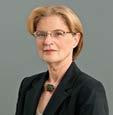

Co-Director, Penn Institute for Urban Research; Albert Sussman Professor of Real Estate, Department of Real Estate, The Wharton School

(L) Mark H. Rosenberg Chair, Penn Institute for Urban Research Advisory Board; Principal, MHR Fund Management LLC
(R) Alan D. Schnitzer
Vice Chair, Penn Institute for Urban Research Advisory Board; Chair and CEO, The Travelers Companies, Inc.

BACK TO CONTENTS 8 PENN IUR
In 2021–22, we continued initiatives launched in response to the pandemic. For example, in collaboration with the Volcker Alliance, we have hosted multiple Special Briefing webinars and a podcast to explore the fiscal outlook for state and local governments. We brought together elected officials, municipal bond market experts, scholars, and other key stakeholders— notably Jerome H. Powell, Chair of the Board of Governors of the Federal Reserve System— who delved into the impact of the American Rescue Plan and Infrastructure and Jobs Investment Acts, working from home technology, and the macro-economic outlook on state and local spending and tax decision-making, among other topics. The series included 11 events in the past year, attracting more than 4,000 participants and podcast listeners.
We also continued several initiatives that underline Penn IUR’s commitment to informing sustainable urban development. For example, doctoral students from Penn and elsewhere convened the Forum in Urban Informality to foster cross-disciplinary scholarly exchanges among early-career researchers on topics ranging from extreme heat across the globe to informality in urbanizing India.
Both on Penn’s campus and in global convenings, including the World Urban Forum 11 (WUF11) in Katowice, Poland, and the Council of Parties 26 (COP26) in Glasgow, Penn IUR deepened conversations around financing urban adaptation. This includes such efforts as Penn IUR’s City Climate-Resilient Infrastructure Financing Initiative (C2IFI) led by Mauricio Rodas, former mayor of Quito, Ecuador and Penn IUR, Perry World House, and Kleinman Center Fellow.
With great pleasure, we launched the Lawrence C. Nussdorf Student Award, honoring our long-time Penn Advisory Board member and leader, to recognize select students for their scholarship and service among the Fellows in Urban Leadership and the Undergraduate Urban Research Colloquium programs. The inaugural awardees were Ayina Anyachebelu (W’22), Dennis Gallo (C’22), and Daniel Ruiz de la Concha (C’22).
Through these efforts and many more detailed in this report, we hope to leave you inspired and confident about Penn IUR’s role helping cities thrive in these turbulent times.

921/22 ANNUAL REPORT
CURRENT RESEARCH

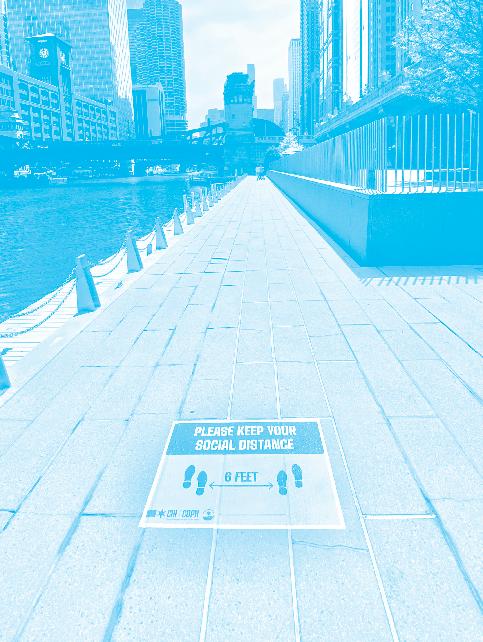

10 PENN IUR BACK TO CONTENTS
Penn IUR’s research initiatives generate new scholarship and promote the exchange of knowledge across disciplines, professions, and continents.


Research projects related to Penn IUR’s commitment to furthering shared prosperity in urban America explore how cities can contribute to a more equitable and sustainable nation. Research projects in the Urban Development and Informality Lab explore how informal and formal development shape urban places around the globe.

1121/22 ANNUAL REPORT
SHARED PROSPERITY IN URBAN AMERICA
The challenges of COVID-19 revealed and widened disparities in health, education, wealth, and more by race, ethnicity, socioeconomic status, and geography. Penn IUR’s research on domestic topics centers on the causes and consequences of these disparities to advance shared prosperity. This year, Penn IUR’s research focused on fair, equitable, and affordable housing; land restrictions and their impact on affordable housing; greening and blight mitigation in urban America; intersections between flood risk and the housing market; and lessons from city recovery from the challenges of the coronavirus pandemic.
FAIR, EQUITABLE, AND AFFORDABLE HOUSING


In 2021–22, Penn IUR undertook several research projects on housing policies and outcomes related to both renters and homeowners.
One project, led by Penn IUR Co-Director Susan Wachter, explored long-term homeownership trends and the potential of policy reform to support more equitable access to homeownership in the future. (For an excerpt from “Homeownership for the Long Run” see
BACK TO CONTENTS
PAGE 50 .) 12 PENN IUR
In addition, Penn IUR Faculty Fellow Vincent Reina completed a multi-year research project on innovations in affordable housing policies, programs, and zoning. As part of this project, he surveyed housing plans across 30 U.S. cities to identify innovative strategies to preserve and create affordable housing, undertook a comprehensive analysis of 17 city-initiated affordable housing plans, and closely examined four potential innovation areas.
An ongoing project led by Penn IUR Fellows Tom Daniels and Christine Quattro inventoried affordable housing requirements in zoning ordinances throughout the United States, analyzing the timing, conditions, and classes of real estate to which these provisions apply. Drawing on this research, they are identifying critical success factors and/or barriers to the use of these provisions.
Penn IUR Advisory Board member Rob Stewart is supporting this initiative.
NATIONAL LAND USE
With funding from the Federal Home Mortgage Corporation (Freddie Mac), Penn IUR is researching the potential for developing a National Land Use Regulatory Index (NLURI) in an effort to identify means to increase housing affordability throughout the United States. Working together with Penn IUR Fellow Richard Voith and Penn IUR Emerging Scholar David Stanek of Econsult Solutions, Inc. (ESI) on this multi-year project, Penn IUR researchers are investigating how to employ machine learning and prediction modeling applied to a national database of parcel-related data on zoning regulations to evaluate their impact on housing prices and affordability.
The team has compiled data for multiple states. They anticipate making a dataset available to researchers for beta testing in the coming year.
GREENING CITIES
In a study funded by Analytics at Wharton, Penn IUR Co-Director Susan Wachter investigated, with Penn IUR Emerging Scholar Desen Lin and Penn IUR Faculty Fellow Shane Jensen, the effect of vacant lot greening on urban revitalization. The team quantified the value of greening vacant lots on nearby housing prices and, using data from a longstanding Pennsylvania Horticultural Society (PHS) program in Philadelphia, they showed how these effects vary by the attributes of the neighborhood in which they occur: larger effects ensue in areas with a high share of vacant land and higherthan-average median household incomes. Using an innovative statistical technique, they demonstrated the importance of controlling for statistical bias in studying greening impacts on neighborhood amenities. They report their finding

in “THE
PRICE EFFECTS OF GREENING VACANT LOTS: HOW NEIGHBORHOOD ATTRIBUTES
MATTER,”
forthcoming in Real Estate
Economics 13
“ The challenges of COVID-19 revealed and widened disparities in health, education, wealth, and more by race, ethnicity, socioeconomic status, and geography. ”
21/22 ANNUAL REPORT
Photo by Pennsylvania Horticultural Society.
FLOOD RISK AND THE HOUSING MARKET
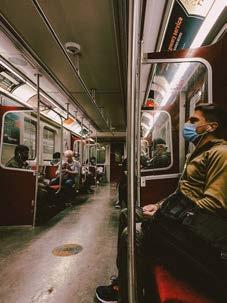
Penn IUR Co-Director Susan Wachter is researching, with Penn IUR Fellow Andrey Pavlov and Michael LaCour-Little, the role of banks’ lending to communities exposed to flood risk. The team has collected a national database on flood-vulnerable communities and the characteristics of the land that increase flood risk. A Penn IUR working paper based on this research will be published in the coming year. This work is an extension of the paper “FLOOD RISK AND THE U.S. HOUSING MARKET” (by Carolyn Kousky, Howard Kunreuther, Michael LaCour-Little, and Susan Wachter) published in the November 2020 issue of the Journal of Housing Research, which synthesized existing research on flood risks, flood insurance, and their impacts on the U.S. housing market.

BACK TO CONTENTS
14 PENN IUR
RECOVERY
The COVID-19 pandemic dealt an unprecedented blow to cities in the U.S. and beyond, with repercussions felt unevenly across cities and among populations, with consequences for public transportation, housing, real estate, and economies. Penn IUR launched the Cities and Contagion Initiative in April 2020 to track the impacts of the pandemic and inform responses to it; as the crisis has dragged on, Penn IUR’s focus has evolved to focus increasingly on city recovery and to the building a new and better normal.
A primary achievement in 2021–22 was Penn IUR’s conclusion of the Recovering Cities Project. This project, launched in 2020, brought together a select group of the global city’s leadership to document quantitatively and qualitatively New York City’s evolving experiences with getting back to normal. (Read an excerpt from the October 2021 SPECIAL REPORT on PAGE 42 .)
Penn IUR’s coverage of city recovery has taken a variety of other forms as well. For example, Penn IUR Faculty Fellow John Landis examined the uneven recovery across metro regions in the U.S. in his brief

“THE COVID-19 RECESSION: WHICH URBAN ECONOMIES HAVE PERFORMED BETTER OR WORSE AND WHY.” Penn IUR Co-Director Susan Wachter, with Penn IUR Fellow and Vice President, Housing Finance Policy, Urban Institute Laurie Goodman, examined impacts on renters and policy responses to these impacts in their contribution to the housing chapter of the Brookings Institution’s RECESSION REMEDIES , a volume that examines and evaluates the breadth of the economic-policy response to COVID-19.
The monthly Volcker Alliance/Penn IUR Special Briefings series include views from public- and private-sector leaders who, in real time, shed light on such key topics as the fate of local finance, the effects of the federal recovery programs on municipal government, and changing ideas about infrastructure investment. These and other Penn IUR resources—along with wider coverage of city and COVID-19-related
research, can be found in the Penn IUR CITIES AND COVID-19 RESOURCE LIBRARY . The resource library is a dynamic compendium of data, research and resources for scholars and practitioners seeking to make sense of and respond to the challenges of the pandemic. Launched in May 2020 and regularly updated with COVID-19 resources from other organizations and institutions focusing on the management and study of cities, the library features a collection of external research publications, webinars, podcasts, and opinion pieces organized by topic.
“
The COVID-19 pandemic dealt an unprecedented blow to cities in the U.S. and beyond, with repercussions felt unevenly across cities and among populations, with consequences for public transportation, housing, real estate, and economies. ”
1521/22 ANNUAL REPORT
SUSTAINABLE URBAN DEVELOPMENT AND INFORMALITY LAB



16 PENN IUR BACK TO CONTENTS
Penn IUR’s Sustainable Urban Development and Informality Lab houses research that explores the ways both formal and informal development shapes urban places around the world.


In 2021–22, the lab focused on financing for climate-resilient cities, research for the Korean Housing and Urban Guarantee Corporation (HUG) and the Wilson Center, electricity delivery in informal Ghanaian cities, knowledge exchange around urban informality research, and best practices in urban innovation. The lab was initially launched in May 2019 in collaboration with Penn IUR Faculty Fellow Erick Guerra.

1721/22 ANNUAL REPORT
CITY CLIMATE-RESILIENT INFRASTRUCTURE FINANCING INITIATIVE

In 2021–22, Visiting Scholar Mauricio Rodas, former mayor of Quito, and Penn IUR Co-Director Eugénie Birch continued to work in conjunction with the Kleinman Center on Energy Policy (KCEP) and Perry World House (PWH) on the two-part research and instructional City Climate-Resilient Infrastructure Financing Initiative (C2IFI ). This multi-year, cross-University initiative is building knowledge and facilitating knowledge-sharing to enable mayors, city officials, and municipal stakeholders to find partners, data, financing instruments, best practices, funding models, and experts to assist them with project preparation and advance climate-resilient infrastructure.
In October 2021, Penn IUR published a policy brief on sustainable mobility in the cities of the Galápagos Islands. #GALÁPAGOSGOESGREEN: RESILIENCY AND CO 2 EMISSION REDUCTION PATHWAYS

helps local leaders understand their options for climate-resilient mobility within the context of Ecuador’s Galápagos Islands’ tourism-based economy. The policy brief explores the context, precedents, and possibilities for sustainable mobility with a focus on the islands’ two largest town centers, Puerto Ayora and Puerto Baquerizo Moreno, as well as the archipelago’s intraisland waters. #GalápagosGoesGreen outlines suggestions for realizing the islands’ vision
istock.com/estivillml.
BACK TO CONTENTS
VIA GREEN TRANSPORTATION FOR RECOVERING THE TOURIST INDUSTRY IN THE AFTERMATH OF COVID-19
Photo:
18 PENN IUR
to transition from fossil fuel dependency to clean energy options through energy grid improvements, non-fossil fuel vehicles, and financial mechanisms. The brief frames the challenges and possibilities leaders face, situates options within the political and economic context, and offers case studies from around the world.
For the current phase of C2IFI’s research component, Birch and Rodas have begun developing, for the Cities Climate Finance Leadership Alliance (CCFLA), a standardized assessment tool to help national governments and international organizations support local governments in procuring financing for climate-resilient infrastructure. This practical guide centers cities’ specific strategic and policy concerns, identifying links to partner sources for detailed advice and information on financing opportunities.
For the initiative’s instructional component, Rodas and Birch offered “CPLN 577 Topics in International Development: City Climate Resilient Infrastructure Finance” to advanced undergraduate in Urban Studies and the Lauder Program, and graduate students in the Weitzman School of

Design in fall 2021. On World Cities Day 2021, students presented their research on adapting cities for climate resilience in a VIDEO uploaded to the Penn IUR website.
In addition, Penn IUR, PWH, and KCEP jointly convened on March 23 and 24 three dozen urban policy and finance leaders to find ways to spur investment in urban adaptation to climate change. “Financing Urban Adaptation to Address Climate Change” included eight expert panels highlighting the implementation and financing of subnational programs and projects designed to adapt to global warming-induced hazards that threaten urban lives and livelihoods.
Over the course of two days, participants shaped a five-point roadmap to stimulate funding in support of urban adaptation to climate change, from (1) mapping needs, (2) coordinating adaptation and mitigation, (3) determining appropriate policy instruments, (4) supporting governmental subsidiarity, to (5) designing new financing approaches.
Penn IUR Co-Director Eugénie Birch and KCEP, PWH, and Penn IUR Fellow Mauricio Rodas fleshed out the roadmap more fully in AN ARTICLE for Penn IUR’s Urban Link
“
#GalápagosGoes
Green outlines suggestions for realizing the islands’ vision to transition from fossil fuel dependency to clean energy options through energy grid improvements, non-fossil fuel vehicles, and financial mechanisms. ”
1921/22 ANNUAL REPORT
JOINT-RESEARCH STUDY FOR THE KOREA HOUSING AND URBAN GUARANTEE CORPORATION (HUG)
Along with researchers from The Wilson Center, U.S. Department of Housing and Urban Development (HUD), and American University, Penn IUR worked with the Korea Housing and Urban Guarantee Corporation (HUG) to develop case studies that inform specific research questions posed by South Korean sponsors. The 2021–22 year was the fourth year Penn IUR participated in this research project, which was established to investigate and compare how public agencies, private developers, civic organizations, and other actors form and fund partnerships that lead to successful projects and community investments.
In October 2021, Penn IUR PRESENTED case studies of Greater Miami and Philadelphia (examining models for financing affordable moderate-to-middle-income rental housing and urban regeneration and disaster resilience focusing on the use of vacant land, respectively) at the Korea City Renaissance Industry Expo (CRIEXPO). Previously, Penn IUR developed studies on the value of business improvement districts (BIDs) in Philadelphia and New York City (September 2019) and the Atlantic Yards Redevelopment in Brooklyn, New York (September 2020).
In Spring 2022, Penn IUR kicked off an evaluation of international housing policies and financial models that could support middle-income rental housing investments in South Korea. The research team submitted draft findings to HUG in June and anticipates releasing a final report in Fall 2022.


BACK TO CONTENTS
20 PENN IUR
“
While most of the households in the three studied settlements have electricity, the majority of them do not use electricity for cooking purposes, instead primarily using firewood and charcoal for cooking food. The field report found several alternative sources of energy in the three studied informal settlements including solar and biogas.
”
ENERGY USE IN INFORMAL SETTLEMENTS IN GHANA
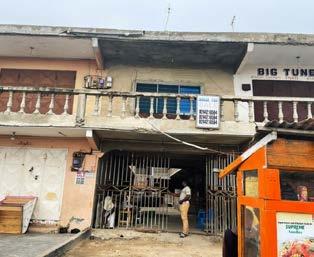
As part of its ongoing investigation into ways to expand access to sustainable and reliable energy in informal settlements, Penn IUR continued work on a multi-year study into electricity delivery and access in Accra, Ghana funded by the Kleinman Center on Energy Policy (KCEP). Penn IUR Fellow James Mensah, Chief Resilience Office, Accra Metropolitan Assembly and Lecturer, University of Ghana, led a research team who systematically studied energy use in three of Accra’s most deprived slum communities: Agbogbloshie, Chorkor, and Avenor.
This year’s research focused on: (1) uncovering alternative sources of energy in informal settlements, (2) measuring residents’ preference for alternative sources of energy, and (3) mapping alternative energy projects and initiatives. While most of the households in the three studied settlements have electricity, the majority of them do not use electricity for cooking purposes, instead primarily using firewood and charcoal for cooking food. The field report found several alternative sources of energy in the three studied informal settlements including solar and biogas. However, it appears that the government is not paying attention to informal settlements when it comes to alternative sources of energy. Mensah and his team will continue this research in the coming year.
A
house in Chorkor that uses biogas for cooking and heating. 2121/22 ANNUAL REPORT
“
Urban informality encompasses livelihoods, settlements, and economies that exist in ambiguous relation to regulatory and statutory protocols. ”
FORUM ON URBAN INFORMALITY

The Penn IUR Forum on Urban Informality fosters cross-disciplinary scholarly exchanges among early-career researchers—graduates and postgraduates—who study urban informality. Very broadly, urban informality encompasses livelihoods, settlements, and economies that exist in ambiguous relation to regulatory and statutory protocols. Forum members tackle the topic through diverse conceptual and methodological frameworks. Through monthly meetings that feature peer reviews of research in progress, the Forum sparks ideas for joint research projects and fosters community and knowledgesharing. Penn IUR provides mentorship and administrative support.
In the summer of 2021, the Forum inaugurated an open-to-the public seminar series structured as dialogues on informality
between academics and practitioners. Their first seminar, held in June 2021, covered the relationship of the informal sector to international waste chains. In the 2021–22 year, the Forum hosted another three seminars (see PAGE 66 for events in the series). The seminars have cumulatively attracted participants from over a dozen countries, with representation from institutions including universities, foundations, governments, hospitals, industry associations, international aid agencies, NGOs, public utilities, and think tanks.
After a short hiatus, the Forum will be returning in Fall 2022 with new programs and projects. To stay updated about Forum activities, you can request access to join the GOOGLE GROUP
BACK TO CONTENTS
22 PENN IUR
URBAN INNOVATION
With traditional urban systems failing to fully address today’s challenges, innovation is urgently needed. In 2021–22, Penn IUR worked in support of innovation at two scales: a big-picture project to help local leaders understand and expand their cities’ capacities for innovation, and a targeted action plan to help the State of Connecticut’s higher education institutions work together to encourage innovation.
Penn IUR undertook the big-picture project— the Urban Innovation Assessment—in partnership with the Guangzhou Institute for Urban Innovation. The Urban Innovation Assessment project will help cities holistically explore their innovation ecosystems and scale up and accelerate success. This effort is tied to global efforts to localize the Sustainable Development Goals (SDGs) and the commitments of the New Urban Agenda. In 2021–22, Penn IUR developed the assessment methodology and a workshop curriculum. The partners have begun the selection process for cities to test the draft workshop. In 2022–23, Penn IUR and the Guangzhou Institute will incorporate cities’ feedback into the final Urban Innovation Assessment tool and distribute the resource widely. This project evolved from Penn IUR’s consultation on the Guangzhou Award for Urban Innovation, a biennial award that focuses on innovative approaches taken by local and regional governments to accomplish the SDGs and meet the commitments of the New Urban Agenda.
more information about the Guangzhou Institute and its efforts to promote urban innovation,
In 2021–22, Penn IUR also completed an innovation-related mid-course review and action plan for CTNext, the Connecticut agency that fosters growth in startup and early-stage businesses and links startups to promote greater business activity. CTNext Higher Education Initiative Program: Strategic Recommendations for the Next Five Years looks in depth at CTNext’s Higher Education Initiative (HEI), designed to fund institutional partnerships that support innovation and entrepreneurship skills for students and faculty and support local innovation ecosystems. Penn IUR’s December 2021 report assesses the program’s first five years and makes recommendations on recalibrating its programs, grouping its strategic recommendations under three scenarios: place-based catalytic investments that build on urban revitalization investments across the state; capacity-building efforts such as supporting a stronger community of educators; and pursuing new opportunities for collaboration and equitable access. CTNext retained Penn IUR to write the original 2017 roadmap and the 2021 update because of the Institute’s deep expertise with urban anchor institutions and economic development.

For
visit its WEBSITE
“
The Urban Innovation Assessment project will help cities explore their innovation ecosystems holistically and how scale up and accelerate success. ”
2321/22 ANNUAL REPORT






24 PENN IUR BACK TO CONTENTS
Penn IUR shares research in print and online and creates opportunities for knowledge exchange among researchers and practitioners. Publications include The City in the 21st Century (C21) book series published by the University of Pennsylvania Press, the SSRN Urban Research eJournal, Urban Link, and a variety of special reports and papers.





Disseminating research is central to Penn IUR’s mission and a core part of all its activities.
2521/22 ANNUAL REPORT
THE CITY IN THE 21ST CENTURY BOOK SERIES
Penn IUR’s Co-Directors Eugénie Birch and Susan Wachter edit The City in the 21st Century series published by University of Pennsylvania Press, which now includes 46 volumes. The series explores the depth and breadth of contemporary urban-focused scholarship across a wide range of disciplines, including anthropology, planning, sociology, economics, architecture, urban design, political science, and history. The series represents a crosssection of research and experience on the city across the developed and developing world.
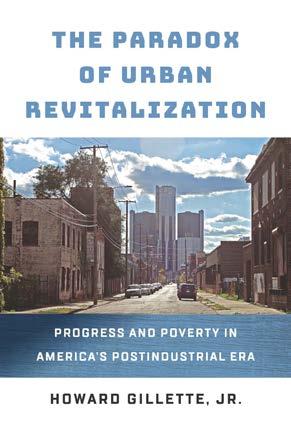
BACK TO CONTENTS
26 PENN IUR
In 2021–22, Penn Press released The Paradox of Urban Revitalization: Progress and Poverty in America’s Postindustrial Era by Howard Gillette, Jr. Professor of History Emeritus, Rutgers University. The book assesses the course of urban politics and policy over the past half century, before the COVID-19 pandemic, and details prospects for achieving greater equity in the years ahead.
In The Paradox of Urban Revitalization, Gillette evaluates the uneven efforts to secure racial and class equity as postindustrial city fortunes have risen in the 21st century. From Detroit to Newark to Oakland and elsewhere, revitalization generated a second urban crisis marked by growing inequality and civil unrest with the urban poor and residents of color remaining very much at a disadvantage in the face of racially biased capital investments, narrowing options for affordable housing, and mass incarceration. Gillette profiles nine cities grappling with the challenges that have arisen with revitalization, exploring the tension between the practice of corporate subsidy, and efforts to assure social justice.
“
From Detroit to Newark to Oakland and elsewhere, revitalization generated a second urban crisis marked by growing inequality and civil unrest with the urban poor and residents of color remaining very much at a disadvantage in the face of racially biased capital investments, narrowing options for affordable housing, and mass incarceration.

”
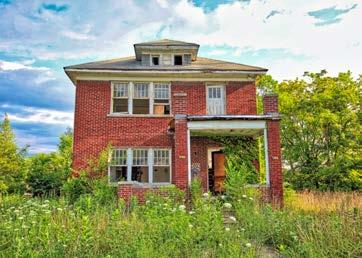
2721/22 ANNUAL REPORT
THE CITY IN THE 21ST CENTURY LIBRARY
The University of Pennsylvania Press publishes its volumes in hardcover, paperback, and electronic versions. The full list of published books in the City in the 21st Century series is below.

Roger D. Abrahams with Nick Spitzer, John F. Szwed, and Robert Farris Thompson
Blues for New Orleans: Mardi Gras and America’s Creole Soul


( HC 2006, EB 2010)
Elijah Anderson with a foreword by Cornel West, editor

Against the Wall: Poor, Young, Black, and Male

( PB 2009, EB 2011)
Sai Balakrishnan
Shareholder Cities: Land Transformations Along Urban Corridors in India

( HC 2019, EB 2019)
Eugénie L. Birch and Susan M. Wachter, editors
Rebuilding Urban Places
After Disaster: Lessons from Hurricane Katrina

( PB 2006, EB 2013)
Eugénie L. Birch and Susan M. Wachter, editors
Growing Greener Cities: Urban Sustainability in the Twenty-First Century
( PB 2008, EB 2011)
Eugénie L. Birch and Susan M. Wachter, editors Global Urbanization



( HC 2011, EB 2011)
Eugénie L. Birch, Shahana Chattaraj, and Susan M. Wachter
Slums: How Informal Real Estate Markets Work
( HC 2016, EB 2016)
Edward J. Blakely with a foreword by Henry Cisneros
My Storm: Managing the Recovery of New Orleans in the Wake of Katrina

( HC 2011, EB 2012)
Peter Hendee Brown
America’s Waterfront Revival: Port Authorities and Urban Redevelopment
( HC 2008)
Peter Hendee Brown
How Real Estate Developers Think: Design, Profits, and Community
( HC 2015, PB 2017, EB 2015)
Jon Calame and Esther Charlesworth
Divided Cities: Belfast, Beirut, Jerusalem, Mostar, and Nicosia
( PB 2012, EB 2011)
Naomi Carmon and Susan Fainstein
Policy, Planning, and People: Promoting Justice in Urban Development
( PB 2013, EB 2013)

BACK TO CONTENTS
28 PENN IUR
Ram Cnaan with Stephanie C. Boddie, Charlene C. McGrew, and Jennifer Kang
The Other Philadelphia Story: How Local Congregations Support Quality of Life in Urban America
( HC 2006, EB 2010)
Margaret Dewar and June Manning Thomas, editors
The City After Abandonment
( HC 2012, EB 2012)
Manny Diaz with a foreword by Michael Bloomberg
Miami Transformed: Rebuilding America One Neighborhood, One City at a Time

( HC 2012, PB 2014, EB 2012)
Richardson Dilworth and Timothy P. R. Weaver, editors

How Ideas Shape Urban Political Development
( HC 2020, EB 2020)
Zaire Zenit Dinzey-Flores
Locked In, Locked Out: Gated Communities in a Puerto Rican City
( HC 2013, EB 2013)
Richard Freeland
Transforming the Urban University: Northeastern, 1996–2006







( HC 2019, EB 2019)
Howard Gillette, Jr.
The Paradox of Urban Revitalization: Progress and Poverty in America’s Postindustrial Era
( HC 2022, EB 2022)
Gregory L. Heller with a foreword by Alexander Garvin

Ed Bacon: Planning, Politics, and the Building of Modern Philadelphia
( HC 2013, PB 2016, EB 2013)
Michael B. Katz
Why Don’t American Cities Burn?

( HC 2011, PB 2013, EB 2012)
Scott Gabriel Knowles
The Disaster Experts: Mastering Risk in Modern America
( HC 2011, PB 2013, EB 2012)
Martin Krieger
Urban Tomographies
( HC 2011, EB 2011)
Christian Krohn-Hansen
Making New York Dominican: Small Business, Politics, and Everyday Life
( HC 2012, EB 2012)

2921/22 ANNUAL REPORT
Jennifer Mack and Michael Herzfeld editors
21ST
Life Among Urban Planners: Practice, Professionalism, and Expertise in the Making of the City

(
Richard Peiser and Ann Forsyth, editors
New Towns for the Twenty-First Century: A Guide to Planned Communities Worldwide






( HC 2021, EB
(
Vincent J. Reina, Wendell E. Pritchett, and Susan M. Wachter, editors; foreword by Marc Morial

Perspectives on Fair Housing

2020, EB
Afaf Ibrahim Meleis, Eugénie L. Birch, and Susan M. Wachter, editors
Women’s Health and the World’s Cities
(
Laura W. Perna, editor
Preparing Today’s Students for Tomorrow’s Jobs in Metropolitan America
( HC 2012, EB 2012)
Harriet B. Newburger, Eugénie L. Birch, and Susan M. Wachter, editors
Neighborhood and Life Chances: How Place Matters in Modern America
(
Marina Peterson
Sound, Space, and the City: Civic Performance in Downtown Los Angeles

( HC 2010,
EB
Michael A. Nutter
Mayor: The Best Job in Politics
( HC 2017, EB 2017)
Marina Peterson and Gary McDonogh, editors
Global Downtowns
( HC 2011, PB 2014, EB 2012)
The University and Urban Revival: Out of the Ivory Tower and Into the Streets
( HC 2007,
(
Cristina D. Rosan
Governing the Fragmented Metropolis: Planning for Regional Sustainability

Brent D. Ryan
Design After Decline: How America Rebuilds Shrinking Cities
( HC 2012, PB 2014, EB

BACK TO CONTENTS
HC 2020, EB 2020)
HC 2011, PB 2013, EB 2011)
HC 2011, PB 2013, EB 2011)
2021)
PB 2012,
2012)
HC
2020)
Judith Rodin
EB 2015)
HC 2016, EB 2016)
2012) THE CITY IN THE
CENTURY LIBRARY (CONTINUED) 30 PENN IUR
Andres Sevtsuk
Street Commerce: Creating Vibrant Urban Sidewalks
( HC 2020, EB 2020)
Mary Corbin Sies, Isabelle Gournay, and Robert Freestone
Iconic Planned Communities and the Challenge of Change
( HC 2019, EB 2019)
John H. Spiers
Smarter Growth: Activism and Environmental Policy in Metropolitan Washington






( HC 2018, EB 2018)
John Timoney with a foreword by Tom Wolfe
Beat Cop to Top Cop: A Tale of Three Cities

( HC 2010, EB 2011)
Domenic Vitiello and Thomas Sugrue, editors Immigration and Metropolitan Revitalization in the United States
( HC 2017, EB 2017)
Susan M. Wachter and Marvin M. Smith, editors
The American Mortgage System: Crisis and Reform
( PB 2014, EB 2011)
Susan M. Wachter and Kimberly A. Zeuli, editors
Revitalizing American Cities

( HC 2013, EB 2013)
Susan M. Wachter, editor Public Pensions and City Solvency

( HC 2016, EB 2015)
Susan M. Wachter and Lei Ding, editors
Shared Prosperity in America’s Communities
( HC 2016, EB 2016)
Susan M. Wachter and Joseph Tracy, editors
Principles of Housing Finance Reform
( HC 2016, EB 2016)

3121/22 ANNUAL REPORT
SOCIAL SCIENCE RESEARCH NETWORK (SSRN) URBAN RESEARCH e JOURNAL
Penn IUR’s Urban Research eJournal , published twice weekly through the Social Science Research Network (SSRN), gathers and distributes new research that addresses the governance, policy, economics, design, and social issues that surround global urbanization. The eJournal highlights the urban-focused research of scholars worldwide. Edited by Penn IUR Co-Directors Eugénie Birch and Susan Wachter and overseen by an advisory board of preeminent urban scholars, it accepts abstracts, working papers, and recently published articles. Scholarship in 2021–22 included: Amrita Kulka , University of Warwick, Aradhya Sood , University of Toronto, and Nicholas Chiumenti , Federal Reserve Banks—Federal Reserve Bank of Boston, “HOW TO INCREASE HOUSING AFFORDABILITY? UNDERSTANDING
LOCAL DETERRENTS TO BUILDING MULTIFAMILY HOUSING.”

Kellen Zale, University of Houston Law Center, and Sarah Schindler, University of Denver Sturm College of Law, “THE ANTI-TENANCY DOCTRINE.”
Kyunghee Lee, Wayne State University— Mike Ilitch School of Business, Qianran Jin, McGill University, Desautels Faculty of Management, Animesh Animesh, McGill University, and Jui Ramaprasad, University of Maryland, “IMPACT OF RIDEHAILING SERVICES ON TRANSPORTATION MODE CHOICES: EVIDENCE FROM TRAFFIC AND TRANSIT RIDERSHIP.”
Sara C. Bronin , Cornell University— College of Architecture, Art & Planning; Cornell University—Law School, and Ilya Ilyankou , University of Leeds, “HOW TO MAKE A ZONING ATLAS: A METHODOLOGY FOR TRANSLATING AND STANDARDIZING DISTRICTSPECIFIC REGULATIONS.”
Jan C. Fransoo, Tilburg University— Tilburg University School of Economics and Management; Eindhoven University of Technology, Department of Industrial Engineering and Innovation Sciences, and Camilo Andrés Mora-Quiñones , TecnolÓ gico de Monterrey, School of Engineering and Sciences, “DECARBONIZING URBAN LOGISTICS: PERSPECTIVES FOR LOW- AND MIDDLEINCOME COUNTRIES.”
Benjamin J. Keys , The Wharton School—University of Pennsylvania, Real Estate Department, and Philip Mulder, University of Pennsylvania—Wharton Risk Management and Decision Processes Center; University of Pennsylvania— Business & Public Policy Department, “NEGLECTED NO MORE: HOUSING MARKETS, MORTGAGE LENDING, AND SEA LEVEL RISE.”
Seongjin Park , University of Chicago— Booth School of Business, Arkodipta Sarkar, Hong Kong University of Science and Technology, and Nishant Vats , University of Chicago Booth School of Business, “POLITICAL VOICE AND (MORTGAGE) MARKET PARTICIPATION: EVIDENCE FROM MINORITY DISENFRANCHISEMENT.”
Since its inception in 2012, Urban Research eJournal articles have been downloaded 1,191,304 times.
BACK TO CONTENTS
Photo: istock.com/Extreme-Photographer.
32 PENN IUR
PENN IUR URBAN RESEARCH

e JOURNAL ADVISORY BOARD
Elijah Anderson
Sterling Professor of Sociology and African American Studies, Department of Sociology, Yale University
Raphael Bostic
President and CEO, Federal Reserve Bank of Atlanta
Yongheng Deng
Professor, Wisconsin School of Business, University of Wisconsin–Madison
Gilles Duranton
Dean’s Chair in Real Estate Professor and Chair, Department of Real Estate, The Wharton School, University of Pennsylvania

Richard Florida
University Professor and Director of Cities, Martin Prosperity Institute, University of Toronto; Distinguished Fellow, New York University’s Schack Institute of Real Estate; Visiting Fellow, Florida International University; Founder, Creative Class Group
Edward Glaeser
Fred and Eleanor Glimp Professor of Economics, Kennedy School of Government, Harvard University
William Goetzmann
Edwin J. Beinecke Professor of Finance and Management Studies and Director, International Center for Finance, Yale School of Management; National Bureau of Economic Research (NBER)
Ira Katznelson
Ruggles Professor of Political Science and History, Columbia University
Kyung-Hwan Kim
Professor, School of Economics, Sogang University; former President, Korea Research Institute for Human Settlements; former Vice Minister, Ministry of Land, Infrastructure and Transport (MOLIT), Republic of Korea
Catherine Ross
Harry West Professor of City and Regional Planning; Director, Center for Quality Growth and Regional Development, Georgia Institute of Technology
Bishwapriya Sanyal
Ford International Professor of Urban Development and Planning, Massachusetts Institute of Technology School of Architecture + Planning
Saskia Sassen
Robert S. Lynd Professor of Sociology, Columbia University
Michael H. Schill
President, University of Oregon
Anthony Yeh
Chair Professor, Department of Urban Planning and Design; Director, Geographic Information Systems Research Centre; University of Hong Kong
Photo: istock.com/James Andrews.
3321/22 ANNUAL REPORT
URBAN LINK
Urban Link is Penn IUR’s monthly online digest that features expert commentary on urban topics and highlights Penn IUR news and events. Launched in November 2012, Urban Link reaches more than 7,500 subscribers. Penn IUR’s Faculty Fellows and Scholars author Urban Link’s articles, allowing Penn IUR to share the groundbreaking scholarship of its associates.
This year, Penn IUR Faculty Fellows and other scholars and practitioners contributed the following features:
Penn IUR
“Federal Response to Pandemic Challenges”
August 2021
Penn IUR
“Shaping Sustainable Urban Growth” September 2021
Eugénie Birch
“Monitoring the Effects of the Pandemic on Metros and Cities Here and There” October 2021
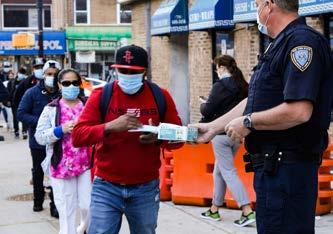
Mark Alan Hughes
“Livable Cities: Our Best Hope” November 2021
Mauricio Rodas and Amy Montgomery
“Can Cities Lead on Climate?” December 2021
Earl Blumenauer, Matthijs Bouw, Henry Cisneros, Richard Florida, Mark Alan Hughes, Allison Lassiter, Marc Morial, Howard Neukrug, Anne Bovaird Nevins, Lisa and Michael Nutter, Laura Perna, Rebecca Rhynhart, Mitchell Silver, Fritz Steiner
“Expert Voices 2022: Reimagining Infrastructure” January 2022
Laura Perna
“Getting the Education and Workforce Training Our Nation Needs” February 2022
Penn IUR
“Nussdorf Urban Leadership Prize Winners Announced” March 2022
Eugénie Birch and Mauricio Rodas
“Five Steps for Financing Urban Adaptation to Climate Change” April 2022
Graduating Urban Doctoral Students “New Ideas in Urban Research” May 2022
BACK TO CONTENTS
Photo by Marc A. Hermann / MTA New York City Transit, via Flickr.
34 PENN IUR
BRIEFS AND SPECIAL REPORTS
Penn IUR’s briefs and special reports offer in-depth research and analysis on timely urban topics from Penn IUR researchers, faculty fellows, and scholars. In 2021–22, publications included:
“Recovering New York City: A One Year Look Back on the Penn IUR Recovering Cities Project, and a Look Forward Towards Recovery”
Penn IUR Special Report, October 2021
“The COVID-19 Recession: Which Urban Economies Have Performed Better or Worse and Why”



John D. Landis, Professor Emeritus, Department of City and Regional Planning, Weitzman School of Design Penn IUR Policy Brief, October 2021
“#GalápagosGoesGreen: Galápagos Green Mobility Strategy” Eugénie L. Birch, Co-Director, Penn IUR; Lawrence C. Nussdorf Professor of Urban Research and Education, Department of City & Regional Planning, Weitzman School of Design Penn IUR Policy Brief, October 2021
5th Guangzhou Award Report on Local Implementation of SDGs Special Report, July 2021
Photo by Nicolás Jiménez Vildósola for Visita Quito, via Flickr.
3521/22 ANNUAL REPORT
Texts
Penn IUR disseminates knowledge through a variety of texts: books, briefs, white papers, journal articles, reports, and online publications. Following are excerpts from some of Penn IUR’s work published over the 2021–22 year.



PENN IUR36




21/22 ANNUAL REPORT 37
BY HOWARD GILLETTE, JR.
Newark: The Hard Road to Inclusive Growth

The City in the 21st Century book series
The following excerpt is from Chapter 5 of The Paradox of Urban Revitalization: Progress and Poverty in America’s Postindustrial Era by Howard Gillette, Jr., published in June 2022 in The City in the 21st Century book series. Copyright 2022 University of Pennsylvania Press.
Immediately following Amazon’s decision to cancel its plans to locate its second North American headquarters in the Long Island section of NYC, Newark mayor Ras Baraka took to the pages of the Washington Post to urge the paper’s owner, Jeff Bezos, to take another look at his city. One of 20 finalists in bidding for the right to host the new Amazon facility, Newark, Baraka claimed, could incorporate the level of change such a decision would entail without sparking the kind of intense community opposition that prompted Amazon to abandon its plans for Queens. Referring to reports of his city’s own revitalization, Baraka pointed to compensating actions included in Newark’s bid that would mitigate the inevitable pressures on rent and housing prices that would come with such a high level of new investment. If Amazon had the power to transform new Newark, Baraka audaciously asserted, Newark could also transform Amazon. “Newark is early enough in its revitalization that we can curate the city we want,” he stated. In setting conditions for Amazon in advance and getting widespread city support for those conditions, Baraka claimed that Amazon investment, supported as it would be by $7 billion in state subsidies, would ensure Newark trajectory as a model for equitable development. Coming from the decidedly leftist Baraka—who was described as the anti-Cory Booker, alluding to his predecessor’s close ties with both financial and high tech corporations—Baraka’s promise of a public–private partnership that could work equitably represented a long step from the politics and policies that had defined Newark’s struggle to recover from the uprisings and associated developments of the turbulent 1960s.
BACK TO CONTENTS
38 PENN IUR
In his state of the city address in March 2019 shortly after his reelection, Baraka reminded his audience of his days as an activist but nonetheless declared, “I cannot afford to be just an activist. I have to have a mind to build. And I have to do all that I can to get all of you to agree to be builders with me as well.” Yes, he admitted, “Newark is growing. Yes, people are coming here. Yes, it can be a scary notion as we watch what has happened to cities experiencing rapid growth around the country, but the status quo is also a scary notion, one we have lived with for decades. We do not have the privilege to do nothing to rail against development in our city, while those that can, go shop, play, and vacation and enjoy in other cities while opposing them in Newark.” To assure his audience that he was working to direct new development and equitable directions, he cited the passage of the city’s new inclusionary zoning ordinance, stronger rent control, establishing the right to counsel to protect residents facing eviction, home foreclosure assistance programs, and the appointment of the commission for equitable growth. A land bank, modeled after Detroit’s initiative, gained state authorization with his strong support only months later. Newark also received support for reducing income inequalities when it was one of 10 cities selected to participate in a new national initiative to identify, pilot, and measure the success of interventions to accelerate economic mobility for city residents.
Steps toward equity could not disguise the ongoing challenges faced by a city burdened with the cost of supporting so many poor residents and so many deferred needs. In what proved to be a major challenge to the city, inspectors discovered in 2017 high levels of toxic chemicals in the drinking water. Baraka made the mistake at first of assuring residents that the problem was manageable before its vast extent became clear. Even as critics cast blame on multiple parties, the problem festered. It took a commitment in the form of a $240 million loan from Essex County executive Joseph DiVincenzo, Jr. to resolve the issue by providing enough money to replace the city’s lead pipes on an
accelerated twenty-four to thirty-month schedule. “You could hardly ask for a starker example of the bifurcation that is plaguing American cities: a glass tower on one block, poisoned water on the next,” Justin Davidson wrote. “As faucets in Flint, Michigan, and subways in New York have proven in a nation with an old and brittle infrastructure the most basic services can be levers of inequality.” The crisis was serious enough to further compromise the lives of those already living in Newark but also to raise fears about prospects for sustaining Newark revitalization. “For Newark’s redevelopment to continue at the pace seen in recent years,” an assessment from New Jersey Spotlight concluded, ”the city will have to work at rebuilding something more daunting and delicate than lead service replacement: trust.”
Even as Newark joined other cities including Detroit and Chicago in the first signs of sustained revitalization at the turn of the new century, Rutgers University’s Kathe Newman warned of the challenges ahead. “Demolishing poorly constructed and maintained high-rise public housing, breaking up areas with concentrated poverty, and building new ‘affordable’ townhomes in formerly devastated neighborhoods all look positive and exciting for lovers of cities,” she concluded. “But the transformation of the urban facade does not address cities’ challenges, which are more difficult to assess and address, especially in an era of federal devolution and so-called compassionate conservatism. As cities embark on what is each day more clearly a new page in their historical evolution, it is necessary to ask about the real costs of urban revitalization.” To their credit, Newark’s leaders, most notably Ras Baraka, recognized those costs and sought through multiple initiatives to address them. For an astute observer like Justin Davidson the fear remained that “maybe the market will heat up and follow its usual ruthless logic, sweeping away compassion and well-meaning policy.” For the moment, however, he chose, as many in Newark did, to believe “Newark has a shot at getting the urban future right, a prospect that excites even the jaded.”
Steps toward equity could not disguise the ongoing challenges faced by a city burdened with the cost of supporting so many poor residents and so many deferred needs.
3921/22 ANNUAL REPORT
BY EUG É NIE BIRCH
The Pandemic Presents Opportunities: A Focus on Mobility
The following is an excerpt from section three of #GalápagosGoesGreen: Galápagos Green Mobility Strategy Resiliency and CO2 Emission Reduction Pathways via Green Transportation for Recovering the Tourist Industry in the Aftermath of COVID-19, a Penn IUR Policy Brief published in October 2021.
While the pandemic put a damper on tourism, the Corporación Andina de Fomento (CAF), the Latin American Development Bank, the World Wildlife Fund (WWF) and others were engaged in developing a $100 million proposal to the Green Climate Fund and additional funders for energy-related projects with a primary focus on grid improvements as well as a substantial citizen education program promoting energy efficiency and ecotourism. The latter includes a proposal to credential or accredit activities that meet eco-tourism standards. This proposal is currently making its way through myriad approval processes.
The University of Pennsylvania’s City Climate Resilient Infrastructure Initiative (C2IFI) is developing a proposal for a program to promote the adoption and implementation of a green mobility strategy that would attract ecologically conscientious travelers while reducing GHG. This project focus responds to the fact that land and sea transport for tourism and fishing represent the highest local demand for fossil fuels, some 65 percent of the total. The C2IFI leadership seek to align this work with the Galápagos Territorial Land Use Plan 2015–2020 that called for: promoting tourism through sustainable practices and optimizing renewable electricity generation, transport and connectivity.
Mobility in the Galápagos
The transport sector has been subject to substantial but unsystematic and ineffective government policy. For example, the national government has restricted motorized vehicle imports since 1998. However, in 2016, it lifted the restrictions for EVs but in 2019, fearful of their draw on the grid, banned them.

BACK TO CONTENTS
Photo: istock.com/RPBMedia. 40 PENN IUR
As of 2018, 2,952 vehicles are registered to residents on the islands, up 53 percent since 2009. … This amounts to one privately owned vehicle for every 2.9 households. …
Both tourists and residents rely on a variety of fossilfueled modes of transportation including bus, ferry, private land and water taxis, automobiles, chivas (truck converted to passenger transport), motorcycles and e-bicycles. …
Maritime transportation for tourism, cargo transport, fishing, and personal travel around the islands is dieselbased. The main inter-island tourist sites are within a two-hour sea journey. The Ministry of Tourism requires registration of all tourism-related boats, recording five types: passenger yachts, passenger boats, daily tour boats, motorized sailboats, and motorboats. …
Other marine transport includes cargo ships, strictly government-controlled to avoid importing invasive plants and species. Nearly 90 percent of the islands’ supplies arrive by sea. In 2016, the government changed the system from pallets to containers in order to address efficiency and food safety issues. Two companies manage three container ships and a diesel tanker that service Santa Cruz and San Cristóbal. The ships visit the islands at regular two-week intervals. The container ships, anchoring at a distance from the docks, unload the containers onto a barge that transports the goods to the cities where it is unloaded onto small trucks for final delivery.
While the worldwide ocean-going cargo industry is looking at ways to reduce emissions and clean up the fleets including sulfur emission standards, partial wind energy, and experiments with hydrogen fuel, improvements in this area are far into the future. So energy savings will have to be in the amelioration of the islands’ port facilities. In fact, the islands’ lack modern energy-efficient port facilities that makes the delivery
process inefficient, increases energy use, and risks accidents and environmental contamination. Today, when the container ships arrive, they offload their cargo onto barges that then go landside where small trucks take to the final delivery. Given this situation, CGREG and the national government are engaged in planning major port improvements.
This situation analysis reveals that much is happening to advance the Galápagos’ ability to recover tourism postpandemic, improve the lives of its residents, protect its remarkable biodiversity, and address climate change. The governance framework for the islands is strong: since the 1970s,
it has been a UNESCO World Monument site with all the safeguards this status offers, it has extensive national parks that protect its land and sea,
it has an up-to-date master plan, it is engaged in implementing an important Zero Fossil Fuel Initiative (albeit behind schedule) and it has gained national attention about the necessity of addressing its inefficient port facilities.
In addition, CAF and partners are preparing a substantial program for financing major electricity-system enhancements to improve its reliability and increase its use of renewables.
The time is ripe for rethinking the island’s mobility system with the aim of transitioning to clean, green transport in many areas. In ordinary circumstances, such a change would be an essential component of the islands’ economic development. It is even more critical now as the islands struggle to recover from the immediate effects of the pandemic while addressing the longer-term consequences of global warming. Based on the experience of other small island economies, micromobility solutions are uniquely suited to the Galápagos.
The time is ripe for rethinking the island’s mobility system with the aim of transitioning to clean, green transport in many areas.
4121/22 ANNUAL REPORT
Recovering New York City
The following is an excerpt from Recovering New York City: A One Year Look Back on the Penn IUR Recovering Cities Project, and a Look Forward Towards Recovery, a Penn IUR Special Report published in October 2021.
… At the group’s first meeting, participants predicted that it might take years for the city to achieve full economic recovery. They speculated on which changes in patterns of work would become permanent. Participants expressed great concern over the fate of the restaurant industry, cultural institutions, Broadway, tourism, and the Metropolitan Transit Authority’s finances. It was also clear that the presidential election was adding to uncertainties about federal support to the city. In his comments, Byron Wien of Blackstone anticipated Donald Trump’s attempts to dispute the election results.
In the following months, real estate sales recovered, reflecting a significant decrease in rental rates and sale prices. Pent-up demand led to sales volumes in some months even exceeding those of the equivalent prepandemic months. However, by most other metrics, the city was far from fully recovered. And while the emergence of the Delta variant in summer 2021 delivered a blow to the city’s recovery trajectory, it did not put the city back to the worst days of the pandemic.
The unemployment rate remained in double digits, with the New York Metro reporting the worst performance in the nation’s top ten metros, ranking tenth in July 2021. Also, at that time, the number of subway passengers were still at less than half of pre-pandemic numbers. A month later, pedestrian volumes in Times Square and Grand Central Station were down 42 percent and 65 percent respectively from pre-pandemic levels.
A study of six major U.S. commercial districts from late August 2021 showed that office vacancy in midtown New York City (13 percent) was lower than similar sites in Chicago (16 percent), Houston (29 percent), LA (18 percent), San Francisco (16 percent) and Washington, D.C. (16 percent). In comparison to other global cities, midtown vacancy rates were slightly, but not significantly, higher—London (10 percent), Paris (9.7), Shanghai (11 percent).

BACK TO CONTENTS
42 PENN IUR
Beyond vacancy data, an August 2021 by report by Lasalle Investment Management on office use as measured by keyboard swipes and fobs compared to a year earlier emphasized the absence of workers. While the top ten metros recorded a 12 percent rate, the New York metro’s was a miserable 2 percent based on a 3,000+ building sample. Others report a higher rate—10 percent. Regardless, the numbers are low.
The New York Partnership’s return to office (RTO) survey of Manhattan employers in August struck a brighter note. While it indicated 44 percent delayed September openings due to Delta, they did expect that 76 percent of employees would return by January 2022.
In September, murders, shootings, and car thefts were higher than in the equivalent months in 2019 but lower than at the same time in 2020 as the spike in crime in New York dated from 2020 and reflected a broader increase in crime in U.S. cities during the pandemic. For example, homicide rates in large cities were up more than 29 percent on average in 2020, and increased by another 10 percent in early 2021. Nonetheless, while homicide rates were well below historic rates, the increase in both years was significant due to its potential impact on the return of tourists and office workers. Popular accounts of these data has had a dampening effect on many groups’ desire to return to work.
In the group’s meetings during these months, presentations from regular and guest participants highlighted important aspects of the recovery and its historical and political context. In the January 2021 meeting, the eminent historian Kenneth Jackson presented an overview of the historical crises New York City had faced and survived. He was optimistic about the city’s ability to recover from the pandemic because of its core strengths of geography, diversity, density, and tolerance. In particular, he acknowledged that he had relatively late in life come to fully appreciate the essential role that the cultural and entertainment sectors play in attracting talented people of
all industries to New York. In the March 2021 meeting, New York Times writer David Goodman discussed the upcoming mayoral election. He explained that due to several factors, including online campaigning, the early primary date, the introduction of ranked choice voting, the large number of candidates, the candidates’ lack of name recognition, and others, this mayoral election season was unlike any the city had seen before.
In the May 2021 meeting, Kathy Wylde, President and CEO of the Partnership for New York City, discussed the fiscal challenges that the city was facing due to the flight of employers and wealthy individuals in response to high taxes. She noted that the city still had two years before it could spend the funds it had appropriated, at which point it would drop off a fiscal cliff unless it corrected course. She discussed the efforts that her organization was making to develop a consensus around a practical, non-ideological fiscal strategy that the next mayor could take.
The group looked at seasonal trends in the next months. They returned to the hospitality and entertainment sectors in July, when Fred Dixon, CEO, NYC & Company and Tyler Morse, CEO, MCR Hotels, provided an overview of current conditions and plans for a national come-to-New York campaign launched to attract domestic visitors. And in September, the “Back to School” session featured Jennifer Raab, president, Hunter College who related the effect of the pandemic on the CUNY system in general and on Hunter and its associated K–12 schools in particular. Two important observations she made were that online learning was proving not to be a successful way to teach and that in the public elementary and high schools, a year of learning was essentially lost, with potentially significant ramifications in the future. Maxine Griffin, former executive vice president for government and community affairs, Columbia University, added a perspective from a private university, noting its importance of this seventh largest employer in the local economy.
Historian Kenneth Jackson was optimistic about the city’s ability to recover from the pandemic because of its core strengths of geography, diversity, density, and tolerance.
… 4321/22 ANNUAL REPORT
BY AMANDA LLOYD AND ENRIQUE SILVA
Cities Increasing Health and WellBeing (SDG 1,2,3)
The following is an excerpt from The 5th Guangzhou Award Report on Local Implementation of SDGs for the Guangzhou Institute for Urban Innovation, released in July 2021.
Health took center stage as never before during 2020, overwhelming other priorities in the urgency of combating COVID-19. … While public health strategy— including development and allocation of diagnostics, therapeutics, and vaccines and broad restrictions on mobility and various forms of economic activity—was most often set at the national level, cities were in the driver’s seat for local implementation, managing risks and fundamental tradeoffs between transmission and mobility, work, recreation, education, and other facets of daily life. …
São José dos Pinhais (pop. 265,000), in the Brazilian state of Paraná, is a settlement on the periphery of the metropolitan area of Curitiba … . Situated along the sensitive boundary where urban expansion encroaches on wildlife habitat, São José is vulnerable to outbreaks of zoonotic and vector-borne disease, including yellow fever, which has spiked in recent years in Brazil and Paraná. To manage disease risks, the municipality launched a highly participatory public health education and outreach campaign anchored in a mobile app (SISS-Geo) designed by the Brazilian government. SISS-Geo allows anyone to register sightings and geographic locations of dead animals or potential contamination with the municipal health department, thus turning citizens into public health scouts. The enhanced data is used by the department to identify potential viral outbreaks up to two months in advance, allowing time to vaccinate thousands of city residents and implement animal protection initiatives to protect wildlife.
In Bandung, Indonesia (pop. 1,699,719), the community-based Ojek Makanan Balita (OMABA) Cooking Center has, for most of a decade, delivered food to targeted children, aiming to reduce malnutrition, stunting, and mortality—and

BACK TO CONTENTS
Photo: istock.com/ronemmons. 44 PENN IUR
has significantly decreased malnourishment and stunting where it has been implemented. Food is prepared and distributed via motorcycle by members, largely women, who gain important skills in food production and entrepreneurship. The project goes beyond conventional supplementary food distribution programs, which, due to government limitations and a lack of agency, have often led to mismatches in supply and demand.
The OMABA Cooking Center holds lessons for urban planners and governments more broadly. It makes use of hyperlocal knowledge, empowering communities and building local capacities, and in so doing fills gaps and redresses central government failures in ensuring access to healthy nutrition for children. In essence, it addresses the last mile problem, identifying and establishing the small but critical final link between people and essential services, which ultimately determines the quality of the system.
Elsewhere, the Municipality of Antananarivo, Madagascar (pop. ~1,500,000) has combined technological and community approaches in three ambitious, synergistic food system initiatives. The first uses a mobile app—‘Mamboly Aho’, or ‘I Farm’—to foster information sharing between the municipality and participants—and among participants themselves— about urban agriculture, including ideas and advice about best practices and techniques (e.g., composting) and waste management. Members share their own projects, which can be geo-located to encourage expansion of the network. Another initiative, “Better Food for Kids”, has installed vegetable gardens in targeted schools, allowing them to offer balanced meals while contributing to community production and environmental education, and reducing both malnutrition and school dropout. Antananarivo has also joined a select group of cities worldwide in signing on to the Milan Urban Food Policy
Pact—the first global monitoring tool to measure city performance on food policy-making processes—and selecting six indicators to track local food priorities. Together, these initiatives represent a comprehensive approach to enhancing the city food system, from increasing production to expanding access for vulnerable groups to increasing resilience. …
A similarly multi-sectoral solution has been adopted by the city of Chongqing, China (pop. 31,243,200) in response to the challenge of safe disposal of medical waste arising from COVID-19. Led by the Municipal Ecological Environmental Bureau, this initiative brought together government officials, experts, technicians, medical staff, and volunteers to implement a range of coordinated actions, from developing new emergency medical waste disposal centers to establishing effective regulations and supervision to prevent secondary infection and virus spread.
A key element of the Chongqing initiative was its partnership with the city of Wuhan, at the heart of the COVID-19 crisis. This relationship, which is replicable across China, significantly benefited both cities and their citizens, allowing for the rapid construction of critical infrastructure and exchange of knowledge during a major crisis. City-to-city exchange will increasingly be paramount to achieving the goals of sustainable development.
The initiatives described here are just a few of hundreds that show that, even under duress, cities are capable of remarkable innovation—indeed, crisis often drives innovation. This year, as cities struggled to deliver essential services and safeguard the health of their citizens in the face of severe financial, physical, and institutional constraints, they implemented a panoply of experiments, repurposing systems and space and creating new solutions at unprecedented pace and scale.
The initiatives described here are just a few of hundreds that show that, even under duress, cities are capable of remarkable innovation—indeed, crisis often drives innovation.
4521/22 ANNUAL REPORT
BY LAURA W. PERNA
Getting the Education and Workforce Training Our Nation Needs
In fall 2021, colleges and universities in the U.S. enrolled a million fewer undergraduates than in fall 2019, the year before the start of the COVID-19 pandemic. Community colleges experienced the greatest decline, with 700,000 fewer students enrolled in fall 2021 than fall 2019. Anyone who cares about higher education—and the wellbeing of our cities and nation—should be troubled by these declines.

In a knowledge-based economy, employers need workers who have completed more than high school. At least some postsecondary education is now required for a “good job.” Individuals with higher education average higher salaries and rates of employment, lower rates of unemployment and poverty, and better working conditions. They have longer lives and better health and their children have better educational outcomes. Cities and communities benefit from a higher tax base, less reliance on social welfare programs, and greater civic and community engagement, among other things.
Even before the start of the COVID-19 pandemic, people from lower-income families, racial/ethnic minoritized groups, and other historically underserved groups were less likely to realize the benefits of higher education. Differences in educational attainment across groups do not reflect deficiencies among the people in these groups. Rather, these differences are the result of structures, systems, and practices that disproportionately provide opportunity for some people, and disproportionately exclude and limit opportunity for others. The disproportionate negative impacts of the COVID-19 pandemic for Black and Brown people and communities threaten to further exacerbate these differences.
BACK TO CONTENTS The following is an excerpt from the February 2022 issue of Urban Link; the full article is available on the Penn IUR website
46 PENN IUR
With their open-access mission, community colleges enable people from groups that have not been well-served by other sectors to get needed postsecondary education. In what is both an advantage and a challenge, community colleges serve diverse educational needs.
With their open-access mission, community colleges enable people from groups that have not been wellserved by other sectors to get needed postsecondary education. In what is both an advantage and a challenge, community colleges serve diverse educational needs. …
With their orientation toward meeting local workforce needs and the pandemic-related threats to educational opportunity and access, now is the time to ensure that community colleges have the resources required to offer needed programs and support the diverse students they strive to serve. …
To design and deliver programs that effectively meet workforce needs, community colleges need to acquire and maintain relevant equipment, hire trained instructors, and provide the assistance students require to succeed. On average, community colleges have fewer resources per student than institutions in other sectors. While funding for community colleges varies across states, on average, appropriations from state and local governments are a much larger source of revenues than the federal government. Funds from the federal government are typically receipts from Federal Pell Grants—financial assistance awarded to students not appropriations awarded to institutions.
Now is also the time to rethink how to improve college affordability. One important step would be to increase the purchasing power of the Pell Grant. Labeled “the
cornerstone of financial aid for low-income students,” Pell Grants are targeted to students from low-income families and, unlike loans, do not need to be repaid. Research demonstrates the positive effects of grants on college student enrollment, credit accumulation, persistence, and degree completion, and suggests that the positive effects increase with the magnitude of the grant award. But, over time the maximum Pell Grant has gone from covering 75 percent of the average cost of attendance at a four-year public college or university in 1975–76, to less than 30 percent today.
Making community college tuition-free would also move us toward our goal of enabling all people to get needed postsecondary education. Also known as college promise programs, free tuition programs have been established by states (e.g., Tennessee, Oregon) and other organizations across the nation. While these programs take many forms, a common approach is to offer free tuition to attend a community college. … Increasing access to community colleges and other forms of postsecondary education would benefit our cities and our nation while providing citizens opportunities to participate in the 21st century skills-based economy. It would send a clear message that we as a country value the talents of all.
Now is the time for a new approach. The stakes—for equity and economic well-being—are too high for inaction.
4721/22 ANNUAL REPORT
Can Cities Lead on Climate?
following are excerpts from the February 2022
BY PENN IUR’S
Cities Walk the Talk on Climate Action at COP26
 By Mauricio Rodas
By Mauricio Rodas

My experience over several COPs makes me hopeful that international leaders are increasingly recognizing the powerful partners they have in cities. While city mayors do not have a formal role in the UN negotiations, they are clearly “walking the talk” on climate action. COP26 attendees might have expected mayors to showcase their work only during “Cities Day,” but I was thrilled to see more than a dozen mayors participating in the “World’s Leaders Summit,” which in previous COPs was an exclusive club, reserved only for heads of state. This reflects growing trends: cities are playing an increasingly important role in the climate change arena, and the world is acknowledging the fact that, without cities’ planning, innovating, and investing the necessary resources to tackle climate change, countries will not be able to meet their Nationally Determined Contributions (NDCs) and achieve the Paris Agreement targets.
Regardless of the negotiation outcomes among countries and the final, signed agreement, several interesting discussions and partnerships took place. For example, as one contribution to the NDCs, the mayors’ delegation mentioned above launched “Cities Race to Zero,” with 1,049 cities in the inaugural group [that] committed to specific targets and timelines. They represent some 722 million people with the collective potential to reduce global emissions by some 1.4 gigatons annually by 2030. Several city networks and NGO groups (C40, the Carbon Disclosure Project, Global Covenant of Mayors for Climate and Energy, ICLEI-Local Governments for
BACK TO CONTENTS The
issue of Urban Link; the full article is available on the Penn IUR website
REPRESENTATIVES TO THE UNIVERSITY OF PENNSYLVANIA’S DELEGATION TO COP26
Youth gathering at COP. 48 PENN IUR
Sustainability, United Cities and Local Governments (UCLG), World Wildlife Fund (WWF), and World Resources Institute (WRI) among others) are backing this global campaign.
Informed by [recent reports on extreme heat in cities], mayors of Miami-Dade County, Freetown, Athens, and Seville, shared the actions they are taking, such as appointing chief heat officers within their administrations to coordinate and accelerate efforts to address this deadly issue, declaring “heat seasons” with precautionary elements and instituting tree planting and implementing white roof programs. Juan Espadas, Mayor of Seville, announced that his city was working on the world’s first heatwave naming and categorization system, similar to hurricane ratings, to be piloted there for adoption in other places.
Hearing from these mayors was inspiring. I am convinced that cities have the power to contribute to the Paris Agreement goals. While there is much more to be done, especially around cities’ direct access to finance, without a doubt I can say that cities were the ones demonstrating concrete climate action at COP26.
Can Cities Fill the Gap in Climate Leadership?
By Amy Montgomery
This article was first published on the Kleinman Center for Energy Policy website.
“Countries Brought Big Promises to COP26. Cities Brought Actions,” read a headline from Time in the aftermath of the conference. This was a sentiment echoed throughout COP26 by local and subnational leaders who have no formal role in the negotiations but see themselves on the frontlines of climate change. This is for good reason.
A combination of factors puts cities at the center of the climate crisis. Cities are experiencing climate effects first-hand (think heat waves and flooding), they are responsible for more than 70% of greenhouse gas emissions (GHGs), they are home to more than 50% of the global population, and they are hubs of innovation. This suggests that cities have both the motivation and unparalleled position to address climate change locally which, in turn, impacts overall global emissions.
During a high-level event on COP26’s Cities, Regions, and Built Environment Day, Mayor Marvin Rees of Bristol,
England and a 2021 Penn IUR Urban Leadership Award winner said “climate change will be won or lost in cities.” Mayors from around the world, representing cities of all sizes, attended COP26 touting climate action plans and innovative solutions in varying stages of implementation.
For example, the small city of Turku, Finland, showcased its ambitious and already in-place plan to build a circular economy and achieve carbon neutrality by 2029. And the Zero Emission Rapid-deployment Accelerator (ZEBRA) partnership announced its expansion—with a $1 billion investment in zero-emission bus fleets in cities across Latin America.
But with all the laudable locally based climate ambition comes a serious note of caution. One of the most distressing criticisms to emerge during the COP26 negotiations came from a Washington Post analysis that showed many member states significantly underreport their GHGs, upon which their climate commitments rest.
Cities, unfortunately, face similar criticisms. A recent study looking at U.S. cities published earlier this year in the journal Nature Communications found “that cities under-report their own greenhouse gas emissions, on average, by 18.3% (range: -145.5% to +63.5%)—a difference which if extrapolated to all U.S. cities, exceeds California’s total emissions by 23.5%.”
Furthermore, a July 2021 study of 167 cities around the world from the journal Frontiers in Sustainable Cities found “current inventory methods used by cities significantly vary, making it hard to assess and compare the progress of emission mitigation over time and space.” And an October 2020 Brookings report “looked at the 100 largest U.S. cities and found that, as of 2017, only 45 had any serious climate pledge at all—and that many of the pledges that did exist [relied] heavier on aspiration than reality.” With about two-thirds of cities lagging in their targeted emission levels and almost all without reliable GHG inventories, this assessment highlights the hurdles facing a “bottom’s up” approach to fighting climate change.
Despite the grim findings, the authors of all these studies acknowledge the necessity and great potential for cities to contribute to the overall global climate goals. Like countries, cities must set ambitious plans for a climate friendly future and follow up with action that can be measured in transparent and consistent ways.
4921/22 ANNUAL REPORT
BY SUSAN
Homeownership for the Long Run

The following is an excerpt from “Homeownership for the Long Run,” published in the Journal of Comparative Urban Law and Policy: Vol. 5 : Iss. 1, Article 23, 274–296.
During the 20th century, the U.S. transformed from a nation of renters to a nation of homeowners. Homeownership became the achievable American Dream (McCabe 2016; Goodman and Mayer 2018), at least for majority households. Can this access to homeownership be sustained and expanded over the coming decades?
The first two decades of the 21st century have raised concerns as to whether such access to homeownership is sustainable for the long run. The financial crisis, which originated in risky lending policies in the first of these decades caused 8 million households to lose their homes (Levitin and Wachter 2020). While white homeownership rates have largely recovered from post-recession lows, Black and young households’ homeownership rates both remain 5 percentage points below their respective 2004 peaks as of the first quarter of 2021 (U.S. Census 2021) despite record low interest rates.
Increasing housing prices and rents due to demand increases, as have occurred postCOVID-19, amid supply constraints, can create a discouraged renter effect in which households delay becoming homeowners, as rents continue to rise, making saving for a down payment more difficult (Acolin et al. 2016; Acolin and Wachter 2017).
In addition, Acolin et al. (2016) explored the effect of potential slow household formation and homeownership access for young adults, following earlier work by Goodman et al. (2015), combined with homeownership rates by age and race/ ethnicity (producing nine scenarios). The homeownership rate in a scenario based on the projected changes in age structure and minority share would be 61 percent by 2050 in a scenario where attainments were similar to those experienced over
BACK TO CONTENTS
WACHTER AND ARTHUR ACOLIN
50 PENN IUR
the 1990 to 2010 period. The projections included scenarios in which housing rents and prices across the nation would converge with current rates observed in California due to housing supply constraints becoming more prevalent nationwide and assumed that due to the lack of intergenerational wealth transfers, minority gaps would persist. The results from these combined downward trends produced a scenario where the U.S. homeownership rate could fall below 50 percent by 2050 if young households experienced similar levels of homeownership attainments as in the 2000s and overall homeownership rate by group converged with California, due to high housing prices throughout the nation.
Expanding sustainable access to homeownership requires a housing finance system that is stable and not subject to periodic crises (Fetter 2013; Wachter and Acolin 2015). The Dodd-Frank Act (DFA) and Government Sponsored Enterprise (GSE) reform did
much to stabilize the financial system in the aftermath of the GFC. But the GSEs which together with Ginnie Mae, provide over two-thirds of mortgage finance are still in a state of limbo, with their ultimate structure yet to be determined (Levitin and Wachter 2020). Access to stable sources of housing finance is particularly important for minority first time homebuyers.
Reforms are required to maintain a stable housing finance system that provide affordable long-term credit to a broad range of borrowers along with actions from the federal, state, and local governments along with foundations, non-profits, and employers to support supply-side access to housing. Without such action and support, it is possible that the future of the two-thirds homeownership rate that has persisted in the U.S. for sixty years will be in question. Addressing the barriers to homeownership is not at odds with the stability of the financial system, and, in fact, long term affordable access to mortgages requires assuring that stability.
Reforms are required to maintain a stable housing finance system that provide affordable long-term credit to a broad range of borrowers along with actions from the federal, state, and local governments along with foundations, non-profits, and employers to support supply-side access to housing.
5121/22 ANNUAL REPORT
SUSAN
Lessons Learned from Rental Policies and Outcomes

BY LAURIE GOODMAN
This excerpt is from Chapter 5, “Lessons Learned from Housing Policy during COVID-19,” in the book Recession Remedies: Lessons Learned from the U.S. Economic Policy Response to COVID-19, edited by Wendy Edelberg, Louise Sheiner, and David Wessel and published by the Brookings Institution.
We are concerned that we have not seen the worst of the stress in the housing market for rent-burdened households. Rents are rising quickly in some markets. CoreLogic data covering the single-family rental market show national annual rent increases on the order of 12 percent for properties turning over in December 2021, and the increases are even more rapid in certain markets, with Miami up 35.7 percent and Phoenix up 18.9 percent (CoreLogic 2022). Apartment List shows even higher increases for multifamily properties (Salviati et al. 2022). However, all renters have not yet experienced a double-digit increase because not all tenants have renewed their lease and because landlords tend to give lower increases to renewing tenants, preferring to spread larger increases over several years. Nationally, rents for all apartments, not just those turning over, increased 3.3 percent in 2021 according to the Consumer Price Index. Going forward, this is likely to accelerate.
To the extent that rent increases faster than wages, the ranks of rent-burdened households will rise, particularly among lower-income renters. Indeed, the COVID-19 pandemic has a long tail, and it may leave many renters in more dire circumstances than they were in before the pandemic, with no more fiscal relief in sight. Meanwhile, the housing landscape has changed. Even though the eviction moratorium has been lifted, landlords are now aware that renter protections that make eviction more difficult, including moratoriums, are possible. The Avail survey results discussed earlier show landlords are protecting themselves by doing more rigorous screening of incoming tenants, including looking at their eviction history or demanding higher credit scores. This more rigorous screening means that once a renter runs into difficulties, subsequent rentals may be even more
BACK TO CONTENTS
AND
WACHTER
52 PENN IUR
difficult to obtain, suggesting that evicted tenants will have even less choice in their next rental.
Neither the eviction moratorium nor the ERA policy response is a long-term solution for the rental market. Eviction moratoriums prevented immediate harm, but owed rental payments continued to accrue. The ERA program was put into place to assist lower-income households, but its erratic rollout prevented timely or easy access to these funds. While these programs surely helped prevent homelessness during the pandemic, there is still uncertainty over the extent to which they will prevent evictions in the aftermath of the pandemic. Moreover, house price rises increased at an unprecedented rate, which has contributed to an increased wealth differential between renters and owners (Acolin, Goodman, and Wachter 2019). Indeed, even as homeowners enjoy an increase in house prices, renters will likely face large rent increases and more difficulties in becoming homeowners going forward. The crisis should prompt much needed conversations on growing inequities between these two groups.
Lessons Learned
Although EIPs and enhanced unemployment benefits were largely sufficient to ensure that moderate and higher-income renters who lost their jobs did not fall behind on rent, lower-income renters did show signs of increased distress. Those renters were already rent burdened before the pandemic. It appears that the pandemic worsened what was already a precarious situation and cash assistance was not sufficient to keep them from falling behind on rent.
In addition, the eviction moratorium was necessary to contain the health crisis. It was valuable to many families, particularly those who were already strained coming into the pandemic and were adversely affected by the pandemic. However, the cost of this moratorium was largely borne by the landlords, which has negative consequences for tenants going forward. In particular, landlords are deferring maintenance on their properties, and many are tightening criteria for new tenants. ERA was valuable to low-income families who were strained coming into the pandemic; nonetheless, a quicker, more streamlined rollout would have been beneficial for tenants and would have reduced the cost of the eviction moratorium for landlords.
The COVID experience offers several lessons for policymakers in future recessions:
Generous income replacement may be sufficient if policymakers are concerned only with the incremental effect of the recession on those who were employed in the formal market before the recession.
Given generous income replacement, an eviction moratorium and ERA largely benefit renters who come into the recession already housing insecure. Eviction moratoriums have negative externalities for landlords and are second best relative to ERA. However, in the middle of a health crisis, eviction moratoriums are necessary.
Along with generous income replacement, a successful ERA program could keep renter delinquency rates from rising during recessions and in their aftermath. Such a program must be streamlined, with a simple application, minimal documentation, and clear eligibility rules, like the successful forbearance program for homeowners discussed in the section of this chapter on mortgage borrowers.
This crisis highlighted the need for a more permanent rental assistance safety net. The reality is that only one out of every four families that qualifies for federal rental assistance receives it. This leaves many vulnerable to any small shock, and when a crisis strikes, it could increase overcrowding and homelessness. A more permanent rental assistance safety net that captures more of the population would mean that in the next crisis, policymakers would be able to focus on a smaller share of people who fall through the cracks.
We must invest in better data on renters and rental market conditions, both delinquencies and evictions. As we have shown, the data underlying this chapter are far from robust, making it impossible to do a rigorous and conclusive analysis of the pandemic policy response. The lack of good pre-pandemic data is particularly problematic because so many renters were in a precarious position before 2020, making it hard to disentangle the effects of the pandemic from prior housing instability.
5321/22 ANNUAL REPORT
BY STEPHEN KLEEGE
Work-From-Home Trend Poses Challenges for City and State Budget

The Special Briefing monthly webinars are produced by the Volcker Alliance in partnership with Penn IUR. Webcast via the Penn IUR and Volcker Alliance websites, Special Briefing has become one of the nation’s leading public policy series since its inception in 2020, attracting an audience of more than 10,000 attendees eager to hear the latest actionable information on the impact of the COVID-19 pandemic and federal aid on U.S. state and local tax revenues, budgets, infrastructure investment, and the $4 trillion municipal securities market. The July 2022, edition of Special Briefing examined the societal and fiscal implications of working from home, a trend that has deeply affected office-property markets and tax collections in such major cities as New York, Philadelphia, and San Francisco. The following article is an account of the program.
The COVID-19 pandemic spurred a six-fold increase in the percentage of U.S. employees working from home, undercutting the value of commercial real estate and posing a challenge to city and state budgets, according to speakers at a special briefing hosted by the Volcker Alliance and the Penn Institute for Urban Research.
“It’s here and it’s here to stay,” Nicholas Bloom, professor of economics at Stanford University, said of the work-from-home phenomenon. The portion of employees working full-paid days from home has increased to about 30 percent from 5 percent before the pandemic. For U.S. cities “the main area of concern is over public finances” as fewer people will be living and working within cities, reducing tax receipts, Bloom said. “The biggest worry for me is over public transport,” he added. “Usage may be down 20–40 percent.”
Organized by William Glasgall, Volcker Alliance senior director, public finance and Penn IUR Fellow, and Susan Wachter, co-director of Penn IUR, the briefing was the thirty-third in a series of sixty-minute online conversations featuring experts from the Volcker Alliance’s national research network and Penn IUR, along with other leading academics, economists, and federal, state, and local leaders.
In addition to Bloom, panelists included Stijn Van Nieuwerburgh, a professor at Columbia University’s Graduate School of Business; Andrew Rein, president of the Citizens Budget Commission in New York; and Lauren Weber, who writes
BACK TO CONTENTS
54 PENN IUR
about workplace issues and employment in the Wall Street Journal ’s corporate bureau in New York. Glasgall moderated the discussion.
Panelists cited data from Kastle Systems that showed occupancy of office space averages 44 percent in the ten biggest U.S. cities, ranging from 38 percent in Philadelphia to 58 percent in Austin, Texas. Much of the discussion centered on New York City, the nation’s biggest office market, where occupancy averaged 41 percent in the week ended July 18.
Based on an analysis of broker-sourced leasing data, Van Nieuwerburgh said, New York office valuation dropped by 33 percent in 2020 and may still be down 28 percent by 2029. That has implications for real estate investment portfolios and for the debt held by investors and banks. “It’s not enough to trigger a financial crisis, but it’s worrisome nevertheless,” he said.
New York City gets 53 percent of its revenue from real estate, and, of that, 22 percent comes from office property taxes, Van Nieuwerburgh said. “Plugging that hole will require tax increases or spending cuts, neither of which are good for the business climate,” he said. He said that the city can avoid “a 1970s-style doom loop” through steps like making it easier for office owners to convert their properties to residential use.
Rein said the New York office market has shown resiliency through past crises and that class A office space is performing relatively well. Lower-quality properties may not be so fortunate. “The real issue is there’s going to be a bigger hit on Class B and C office space,” which accounts for $2.5 billion in revenue for the city, Rein said. “There’s a lot more of that space than probably is necessary.”
Weber said emptier subways and buses have created an “unvirtuous circle” for the Metropolitan Transportation Authority, the state agency that runs New York City’s subway and bus systems. Though crime is down, recent shooting incidents and emptier subway cars have made subway passengers feel less safe, she said, complicating efforts by the debt-burdened authority to increase ridership from 55 percent of pre-pandemic levels.
The work-from-home phenomenon has had a spillover effect on retailers in central business districts, reducing demand for lunch trucks and other businesses that relied on office workers for sales. However, Rein said he remains optimistic about the entrepreneurial spirit in New York. He cited a report from city Comptroller Brad Lander’s office that while there had been a 5,100-business decline in retail entities in Manhattan, the number has increased by 1,300 in the largely residential borough of Brooklyn.
For U.S. cities ‘the main area of concern is over public finances’ as fewer people will be living and working within cities, reducing tax receipts, Nicholas Bloom, professor of economics at Stanford University, said.
5521/22 ANNUAL REPORT


56 PENN IUR BACK TO CONTENTS



5721/22 ANNUAL REPORT
SPECIAL BRIEFINGS ON THE FISCAL OUTLOOK OF STATE AND LOCAL GOVERNMENTS
JULY 15, 2021
The Biden Infrastructure Plan: Resilience, Equity, and Federal Investment
Speakers: Brad Little , Governor, Idaho
Carolyn Bourdeaux , U.S. Congresswoman, Georgia
Laura Curran , Executive, Nassau County, New York
Manny Diaz , Former Mayor, Miami, Florida
Thomas G. Doe , President, Municipal Market Analytics
Co-Sponsor: The Volcker Alliance
SEPTEMBER 23, 2021
The Infrastructure Investment and Jobs Act: Clean Water, Better Broadband, Resilience, and Equity
Speakers: Ras J. Baraka , Mayor, Newark, New Jersey
Kathryn de Wit, Project Director, Broadband Access Initiative, The Pew Charitable Trusts Howard Neukrug , Professor of Practice,
Department of Earth and Environmental Science, School of Arts and Sciences
Thomas Hazlett , Hugh H. Macaulay Endowed Chair in Economics, Clemson University
Co-Sponsor: The Volcker Alliance
OCTOBER 21, 2021
The Biden Infrastructure Plan: Unmet Needs and State of Play
Speakers: Carolyn Coleman , Executive Director and CEO, League of California Cities Andrew Haughwout , Senior Vice President and Policy Leader, Research and Statistics Group, Federal Reserve Bank of New York
Annie Linskey, White House Reporter, The Washington Post
Torsten Slok , Chief Economist, Apollo Global Management
Co-Sponsor: The Volcker Alliance
BACK TO CONTENTS
58 PENN IUR
NOVEMBER 18, 2021
Climate Change, Federal Aid and State and Local Strategies
Speakers:
Nora Wittstruck , Director-ESG Lead in U.S. Public Finance, S&P
Emily Robare , Vice President and Credit Research Analyst, PIMCO Municipals
Hughey Newsome , Chief Financial Officer of Wayne County, Michigan
Tim Coffin , Director of Sustainability, Breckinridge Capital Advisors
Nora Fitzpatrick , Regional Affairs Specialist, the Federal Reserve Bank of New York
Co-Sponsor: The Volcker Alliance
DECEMBER 16, 2021
State and City Spending of Federal Infrastructure Funds
Speakers:
Earl Blumenauer, U.S. Congressman, Oregon, and Member, House Ways and Means Committee
Patrick Brett , Managing Director and Head of Citi’s Municipal Debt Capital Markets and Capital Solutions Businesses, Chairman of the Municipal Securities Rulemaking Board
David Glick, Associate Professor of Political Science, Boston University, Faculty Director of MetroBridge, and Co-Principal Investigator, Menino Survey of Mayors, Boston University Initiative on Cities
Co-Sponsor: The Volcker Alliance
JANUARY 22, 2022
The 2022 Outlook for States and Cities
Speakers:
Lucy Dadayan , Senior Research Associate, Urban-Brookings Tax Policy Center, Urban Institute
Larry Johnson , President, National Association of Counties and Commissioner, DeKalb County, Georgia
Eric Kim , Senior Director, Fitch Ratings Inc. Torsten Slok , Chief Economist, Apollo Global Management
Mark Zandi , Chief Economist, Moody’s Analytics
Co-Sponsor: The Volcker Alliance
5921/22 ANNUAL REPORT
FEBRUARY 17, 2022
New York City: New Mayor, Federal Aid, Challenges to Recovery
Speakers:
Ronnie Lowenstein , Former Director, New York City Independent Budget Office
Ray McGuire , Former Vice Chairman, Citigroup, and New York City mayoral candidate
Richard Ravitch , Former New York State Lieutenant Governor
Kathryn Wylde , President and CEO, Partnership for New York City Co-Sponsor: The Volcker Alliance
MARCH 17, 2022
Work from Home: What it Means for State and Local Economies and Revenues
Speakers:
Jose Maria Barrero, Associate Professor, Instituto Tecnològico Autònomo de Mèxico
Howard Chernick , Professor Emeritus, Hunter College, CUNY
Ally Schweitzer, Reporter, WAMU
Anthony Williams , Former Mayor, Washington, D.C.
Co-Sponsor: The Volcker Alliance
APRIL 21, 2022
Inflation and Recession Risks for States and Cities
Speakers:
Mark Zandi , Chief Economist, Moody’s Analytics
Matt Gress , Budget Director, Arizona
Natalie Cohen , Founder, National Municipal Research
Les Richmond , Vice President and Actuary, Build America Mutual Assurance
Co-Sponsor: The Volcker Alliance
MAY 19, 2022
The Deployment of the $1 Trillion Infrastructure Investment and Jobs Act by States and Localities
Speakers:
Jorge Elorza, Mayor, City of Providence, Rhode Island
Patrick Brett , Managing Director, Municipal Debt Capital Markets, Citigroup
Larry Parks , Co-Founder, Forethought Advisors
Co-Sponsor: The Volcker Alliance
BACK TO CONTENTS
60 PENN IUR
Livable Cities
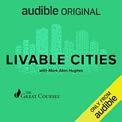
On October 29, Penn IUR hosted a crossuniversity discussion of Livable Cities , the Audible book by Penn IUR Faculty Fellow Mark Alan Hughes, Professor of Practice, Department of City and Regional Planning, Weitzman School of Design and Faculty Director, Kleinman Center for Energy Policy.
Through 10 chapters, Livable Cities explores why we seek out cities and how they create the conditions that allow us to meet our fundamental needs as individuals and as a human community. The book also examines some of the most pressing issues cities face today, including racial inequality, pandemics, and climate change. After an introduction by Penn IUR Co-Director Eugénie Birch and Hughes, two faculty members discussed each chapter (listed below):
The Livability of Cities Michael Weisberg, Professor and Chair of Philosophy, School of Arts and Sciences; Senior Faculty Fellow and Director of Post Graduate Programs at Perry World House Akira Drake Rodriguez, Assistant Professor, City & Regional Planning, Weitzman School of Design
Building Refuge in Cities Randy Mason, Professor, Historic Preservation and City & Regional Planning; Faculty Director, Center for the Preservation of Civil Rights Sites, Weitzman School of Design David Grazian, Professor, Sociology and Communication; Faculty Director, Urban Studies Program, School of Arts and Sciences
Markets at the Crossroads Gilles Duranton, Dean’s Chair in Real Estate Professor, The Wharton School
Erick Guerra, Associate Professor and Associate Chair, City & Regional Planning; Director, Cm2 University Transportation Center, Weitzman School of Design
Freedom the Key to the Cities Michael Delli Carpini, Oscar H. Gandy Professor of Communication & Democracy, Annenberg School for Communication
Mia Bay, Roy F. and Jeannette P. Nichols Chair in American History, School of Arts and Sciences
Livable Cities are Edible Cities
Domenic Vitiello, Associate Professor, City & Regional Planning, Weitzman School of Design
Karen Glanz, George A. Weiss University Professor, Professor, Perelman School of Medicine and the School of Nursing; Director, UPenn Prevention Research Center
The Wisdom of Cities
Allison Lassiter, Assistant Professor, City & Regional Planning, Weitzman School of Design Bethany Wiggin, Associate Professor of German; Founding Director, Penn Program in Environmental Humanities, School of Arts and Sciences
Waste Not, Walk Not
Jennifer Pinto-Martin, Viola MacInnes/ Independence Professor of Nursing; Professor of Epidemiology, Perelman School of Medicine; Executive Director, Center for Public Health Initiatives
David Barnes, Associate Professor, History and Sociology of Science, School of Arts and Sciences
Paradise Lost and Found Karen M’Closkey, Associate Professor, Landscape Architecture, Weitzman School of Design
Simon Richter, Class of 1942 Endowed Term Professor of German; Department Chair, Germanic Languages and Literatures, School of Arts and Sciences
The Survival of Livability
Eugénie Birch, Penn IUR Co-Director; Lawrence C. Nussdorf Professor of Urban Research and Education, City & Regional Planning, Weitzman School of Design
Francesca Ammon, Associate Professor, City & Regional Planning and Historic Preservation, Weitzman School of Design
SPOTLIGHT ON:
6121/22 ANNUAL REPORT
Financing Urban Adaptation to Address Climate Change



On March 23 and 24, Penn IUR, Perry World House (PWH), and the Kleinman Center for Energy Policy (KCEP) jointly convened three dozen urban policy and finance leaders to find ways to spur investment in urban adaptation to climate change. Financing Urban Adaptation to Address Climate Change included eight expert panels highlighting the implementation and financing of subnational programs and projects designed to adapt to global warminginduced hazards that threaten urban lives and livelihoods.
“Urban climate adaptation will be central to human well-being in a world where 70 or more percent of the world’s population by mid-century is living in cities—and no doubt suffering from what will most likely be well above 1.5 degrees Celsius warming,” said Jeffrey Sachs, University Professor and Director, Center for Sustainable Development, Columbia University, in his keynote address. “It’s so important that you are getting together this group of experts to think about this issue.”

Over the course of two days, participants shaped a five-point roadmap to stimulate funding in support of urban adaptation to climate change, from (1) mapping needs, (2) coordinating adaptation and mitigation, (3) determining appropriate policy instruments, (4) supporting governmental subsidiarity, to (5) designing new financing approaches. Penn IUR Co-Director Eugénie Birch and KCEP, PWH, and Penn IUR Fellow Mauricio Rodas fleshed out the roadmap more fully in their article for Penn IUR’s Urban Link
The two-day workshop was part of the City Climate-Resilient Infrastructure Financing Initiative (C2IFI), a joint initiative of PWH, Penn IUR, and KCEP and led by Rodas. C2IFI is building knowledge and facilitating knowledge-sharing to enable mayors, city officials, and municipal stakeholders to find partners, data, financing instruments, best practices, funding models, and experts to assist them with project preparation and advance climateresilient infrastructure.
BACK TO CONTENTS SPOTLIGHT ON:
62 PENN IUR
Special Briefing on States Cutting Taxes: Relief Now, Shortfalls
Speakers:
Alex Adams , Budget Director, Idaho
Beverly S. Bunch , Professor, School of Public Management and Policy, University of Illinois Springfield
Howard Cure , Partner and Director of Municipal Bond Research, Evercore Wealth Management
Shelby Kerns , Executive Director, National Association of State Budget Officers
Co-Sponsor: The Volcker Alliance EDUCATION AND WORKFORCE
SOLUTIONS FOR AN EQUITABLE FUTURE
Community Colleges: Who Should Pay?
Speakers:
Zakiya Smith Ellis , Chief Policy Advisor to New Jersey Governor Phil D. Murphy
Mike Flores , Chancellor, Alamo Colleges District, San Antonio Texas
Martha Kanter, CEO, College Promise; and Edward Smith, Education Program Officer, The Kresge Foundation
Laura Perna , Vice Provost for Faculty; Centennial Presidential Professor of Education, Graduate School of Education; and Executive Director, Alliance for Higher Education and Democracy (AHEAD), University of Pennsylvania
Federal Support for Local Workforce Solutions
Speakers: Donald Guy Generals , President, Community College of Philadelphia
Harry J. Holzer, John LaFarge, Jr. S.J. Chair and Professor, McCourt School of Public Policy, Georgetown University
James Kvaal , Under Secretary of Education, United States Department of Education
Theresa Y. Singleton , Senior Vice President and Community Affairs Officer, Federal Reserve Bank of Philadelphia
Laura Perna, Vice Provost for Faculty; Centennial Presidential Professor of Education, Graduate School of Education; and Executive Director, Alliance for Higher Education and Democracy (AHEAD), University of Pennsylvania
DECEMBER 7, 2021
JUNE 23, 2022
Later?
OCTOBER 12, 2021
6321/22 ANNUAL REPORT
CITY FORM FOR SUSTAINABLE GROWTH
SEPTEMBER 17 , 2021
City Form for Sustainable Growth
Speakers:
Solly Angel, Professor of City Planning, Marron Institute of Urban Management, NYU
Somik Lall , Global Lead, Territorial and Spatial Development and Lead Urban Economist, Urban, Disaster Risk Management, Resilience and Land Global Practice, World Bank Edgar Pieterse , Director, African Centre for Cities, University of Cape Town
Daniel Sturm , Professor of Economics, London School of Economics
Shipra Narang Suri , Chief, Urban Practices Branch, UN-Habitat
Gilles Duranton , Dean’s Chair in Real Estate Professor, The Wharton School
Sameh Wahba, Global Director, Urban, Disaster Risk Management, Resilience and Land Global Practice, World Bank
APRIL 5, 2022
Revisiting Spatially Targeted Policies for Regional Development
Speakers:
Gilles Duranton , Dean’s Chair in Real Estate Professor, The Wharton School
Arti Grover, Senior Economist, Finance, Competitiveness and Innovation Global Practice, The World Bank
Somik Lall , Lead Economist, Equitable Growth, Finance, and Institutions Vice Presidency & Head, Climate Economics and Policy team, The World Bank Vernon Henderson , School Professor of Economic Geography, London School of Economics
Danny Leipziger, Managing Director, The Growth Dialogue, and Professor of Practice of International Business, George Washington University
William F. Maloney, Chief Economist, Latin America and the Caribbean Region, The World Bank Group
BACK TO CONTENTS
64 PENN IUR
4th Annual Jeremy Nowak Lecture





On April 26, Penn IUR and Reinvestment Fund hosted the fourth annual Jeremy Nowak Memorial Lecture. Every year, this event highlights Jeremy Nowak’s enduring work to integrate public, private, and nonprofit expertise to achieve collective urban prosperity. The event gives students and professionals the opportunity to hear from experts on topics that manifest the connections between the academic and the applied aspects of urban development, a combination that Jeremy exemplified.
This year’s discussion focused on investing arts and culture in building community. In a conversation that embodied Jeremy’s spirited style, participants debated the ways in which communities shape arts and culture, and arts and culture shape communities. Participants identified ways to build community without creating physical, financial, or cultural displacement.
Jeremy Nowak—who started his career as a community organizer—was always looking for projects that facilitated community engagement, said Don Hinkle-Brown, President and CEO, Reinvestment Fund. “For him, arts was about creating value in a community and about creating infrastructure that enriched community connections,” he added.
Event participants included Jamie Bennett, Former Executive Director, ArtPlace America; Marland Buckner, Co-Founder and Principal, MB2 Solutions; Hinkle-Brown; and Judilee Reed, President/CEO, United States Artists. To stream a video of the event and previous events in the annual series, visit the Penn IUR website
SPOTLIGHT ON:
6521/22 ANNUAL REPORT
FORUM ON URBAN INFORMALITY
JULY 23, 2021
Bridging Gaps in Energy Access: Intersections Between Basic Service Provision, Public Health, and Climate Action
Speaker: Deepti Chatti , Assistant Professor of Environmental Studies and Affiliate Faculty with the Schatz Energy Research Centre at Humboldt State University
SEPTEMBER 3, 2021
Rethinking the Theoretical
Divide: Urban Informality in the Global North
Speakers:
Noah Durst , Assistant Professor, Urban and Regional Planning School of Planning, Design & Construction, Michigan State University
Robert Fairbanks II , Lecturer and Fellow, Urban Studies Program, University of Pennsylvania
SEPTEMBER 24
The Employment Paradox: High Job Openings and the Undocumented Latinx
Speakers: Michael Jones-Correa , President’s Distinguished Professor of Political Science and Director, Center for the Study of Ethnicity, Race and Immigration (CSERI) Héctor Manuel Herrada Rangel , Community Activist, Philadelphia
PUBLIC PROGRAMS
CLIMATE WEEK AT PENN EVENT SEPTEMBER 23, 2021
Extreme Heat in Cities: The Silent Killer
Speakers: Eleni Myrivili , Chief Heat Officer, Chief Resilience Officer, and Former Deputy Mayor, City of Athens
Mauricio Rodas, Former Mayor, Quito, Ecuador, and Visiting Fellow, Penn IUR, Perry World House, and Kleinman Center for Energy Policy
BACK TO CONTENTS
66 PENN IUR
SEPTEMBER 30, 2021
Residential Segregation in an Urbanizing India
Speaker: Naveen Bharathim , Postdoctoral Research Fellow, CASI Host: Center for the Advanced Study of India (CASI)
OCTOBER 12, 2021
Data and Technology Ecosystems for Social Good
Speaker: Aaron Bean , Managing Partner, Asemio Host: Master of Urban Spatial Analytics (MUSA) program
OCTOBER 21, 2021
Governing Locally: Institutions, Policies, and Implementation in Indian Cities
Speakers: Suraj Jacob, Political Economist, Azim Primji University Babu Jacob, Former Member, Indian Administrative Service
Host: Center for the Advanced Study of India (CASI)
PENN IUR CO-SPONSORED EVENT OCTOBER 26, 2021
Redlined Forever: The Racist Past of Today’s Land Use Regulations
Speaker: Jessica Trounstine , Foundation Board of Trustees Presidential Chair, Professor of Political Science, University of California, Merced Organizer: Penn Program on Regulation Co-Sponsor: Penn Law Office of Equity and Inclusion
OCTOBER 27, 2021 Livable Cities
Featured Speaker: Mark Alan Hughes , Professor of Practice, Department of City and Regional Planning, Weitzman School of Design and Faculty Director, Kleinman Center for Energy Policy
Spotlight on PAGE
for more on the this program.
See
6 1
6721/22 ANNUAL REPORT
Networking Sessions at the 11th Session of the World Urban Forum
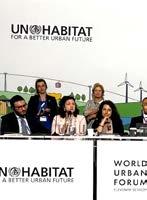
The Penn Institute for Urban Research and Perry World House hosted two networking sessions on June 27 and June 28 at the World Urban Forum (WUF), which was held from June 17–July 1 in Katowice, Poland and organized by UN-Habitat. The World Urban Forum is the premier global conference on sustainable urbanization. The 2022 theme was “Transforming Our Cities for a Better Urban Future,” and was meant to provide greater insights and clarity on the future of cities based on existing trends, challenges and opportunities, as well as suggest ways cities can be better prepared to address future pandemics and a wide range of other shocks.
Penn IUR and PWH contributed to WUF discourse through the organization of two networking sessions, which build on former programming, including the Global Powers and Urbanization Program (GPUP ), a workshop on Financing Urban Adaptation to Address Climate Change , and a roundtable discussion on ‘Rebuilding Trust through Subnational Engagement.’
The first session on June 27 discussed how cities can elevate their role in international decision-making. The session featured the participation of Peter Kurz, Lord Mayor of Mannheim, Germany; Mauricio Rodas, former Mayor of Quito, Ecuador and Perry World House Visiting Fellow; and Ian Claus, Director of Research and Policy for the Global Parliament of Mayors. The session was moderated by Penn IUR Co-Director Eugénie Birch. To address the topic, participants debated how cities could leverage networks and other collaboration to improve representation of their interests and access to finance on the global stage. They emphasized the importance of the recognizing cities impact and influence on the achievement of global agendas, especially since cities house over 50 percent of the world’s population; serve as frontline actors in the fight against climate change; and drive real-time and innovative solutions to global challenges like the pandemic.
The second session on June 28 focused on how cities can increase the flow of resources, especially private sector finance, to support adaptation to climate change in urban spaces.
The session built out and advanced ideas from a March 2022 workshop and the resulting brief, “Five Steps for Financing Urban Adaptation.”
Held in the format of a roundtable conversation, the WUF networking event featured the participation of Kathy Baughman McLeod, Director and Senior Vice President of the Adrienne Arsht–Rockefeller Foundation Resilience Center at the Atlantic Council; Tadashi Matsumoto, Head of Unit, Sustainable Development and Global Relations, OECD; Kevin Nelson, Urban Team Lead in the Office of Land and Urban, USAID; Calvin Johnson, Office of Deputy Assistant Secretary For Research, Evaluation, And Monitoring (ODAS/REM) HUS, USER; Priscilla Negreiros, Manager, Cities Climate Finance Alliance at Climate Policy Initiative; Alice Charles Lead, Urban Transformation, World Economic Forum; Konstantina Karydi Urban Innovative Actions (UIA) is an Initiative of the European Commission (Greece); Augustin Maria Senior Urban Specialist at the World Bank (Morocco); Garima Prasai Director, Strategies and Operations, Resilient Cities Catalyst; Jeb Brugmann, Founding Principal, Resilient Cities Catalyst; and Mauricio Rodas, former Mayor of Quito, Ecuador and Penn IUR and Perry World House Visiting Fellow. The session was moderated by Dr. Genie Birch of Penn IUR. Participants discussed innovative approaches to increasing financial flows for to support urban adaptation to climate change. They highlighted challenges and solutions to making such projects attractive and open to private investment flows.
BACK TO CONTENTS SPOTLIGHT ON:
68 PENN IUR
Using Vacant Land and Property to Promote Urban Revitalization and Disaster Resilience: Case Studies from the United States
Speakers: Eugénie Birch , Co-Director, Penn IUR Michael Craig , Economist, U.S. Department of Housing and Urban Development Amanda Lloyd , Program Director, Global Research Initiatives
Adapting Cities for Climate Resilience
Speakers: Eugénie Birch , Co-Director, Penn IUR Mauricio Rodas , Former Mayor, Quito, Ecuador, and Visiting Fellow, Penn IUR, Perry World House, and Kleinman Center for Energy Policy
Students of CPLN 577, Topics in International Development
PENN IUR BOOK TALK NOVEMBER 4 , 2021
Dr. Judith Rodin: Making Money Moral:
How a New Wave of Visionaries Is Linking Purpose and Profit
Participants: Judith Rodin , President Emerita, University of Pennsylvania, and Former President, The Rockefeller Foundation Eugénie Birch , Co-Director, Penn IUR
NOVEMBER 17, 2021
Colossus: The Anatomy of Delhi
Speakers:
Sanjoy Chakravorty, Professor of Geography and Urban Studies and Director of Global Studies, Temple University Neelanjan Sircar, Senior Fellow, Centre for Policy Research, New Delhi
Host: Center for the Advanced Study of India (CASI)
KOREA CITY RENAISSANCE INDUSTRY EXPO 2021 OCTOBER 28, 2021
WORLD CITIES DAY 2021 OCTOBER 29, 2021
6921/22 ANNUAL REPORT
23,
Rebuilding Trust in International Institutions Through Subnational Engagement
Host: Perry World House (PWH)
MARCH 23 AND 24,
Financing Urban Adaptation to Address Climate Change
Keynote speaker: Jeffrey Sachs , University Professor and Director, Center for Sustainable Development, Columbia University Co-Sponsors: Perry World House (PWH) and Kleinman Center for Energy Policy (KCEP)
on the this program.
APRIL 15, 2022
Third Annual Wharton Future of Cities Conference
Selected Speakers: William J. Barber III , Director of Climate and Environmental Justice, Climate Reality Project Koko Warner, UN Framework Convention on Climate Change (UNFCC) Secretariat
Andrew Wishnia , Deputy Assistant Secretary, Climate Policy, U.S. Department of Transportation
URBAN LEADERSHIP FORUM APRIL 20, 2022
17th Annual Urban Leadership Forum
Awardees: Emilia Saiz Carrancedo, Secretary General, United Cities and Local Government (UCLG)
Claudio Orrego, Governor, Santiago Metropolitan Region, Chile
BACK TO CONTENTS
See Spotlight on PAGE 71 for more on the this program. FEBRUARY
2022
2022
See Spotlight on PAGE 62 for more
70 PENN IUR
Nussdorf Award and Urban Leadership Forum


Penn IUR presented the 2022 Lawrence C. Nussdorf Urban Leadership Prize on April 20 to two leaders who are showing the way forward in how local and regional governments can transform the lives of citizens in emerging economies. Emilia Saiz Carrancedo, Secretary General, United Cities and Local Government (UCLG), and Claudio Orrego, Governor, Santiago Metropolitan Region, Chile received the awards at Penn IUR’s 17th Annual Urban Leadership Forum.
The annual prize, formerly known as the Penn IUR Urban Leadership Award, recognizes exemplary leaders who have demonstrated the vision to revitalize urban centers, respond to urban crises, and champion urban sustainability in the United States and around the globe. “Both have had long and impactful careers in advancing sustainable urban development,” said Penn IUR Co-Director Eugénie Birch, speaking about this year’s winners. “Emilia Saiz Carrancedo has been a tireless advocate in global discussions for some 250,000 subnational leaders’ interests while Claudio Orrego has promoted urban causes at the national–ministerial and city–metropolitan levels as an innovative and imaginative multi-term mayor.”
Emilia Saiz Carrancedo is the current Secretary General of UCLG since her appointment in Hangzhou in December 2017. She has worked with the international movement of local and regional governments in different capacities since 1998, leading programs and initiatives on institutional capacity-building, the participation of women in local decision-making, and decentralized cooperation.
Claudio Orrego is the first elected Governor of the Santiago Metropolitan Region in Chile and previously served as Mayor of Peñalolén for two terms and later as Intendant of the Metropolitan Region from 2014–2018. As an innovative and imaginative leader at the national–ministerial and city–metropolitan levels, he has tirelessly and effectively promoted urban causes.

SPOTLIGHT ON:
7121/22 ANNUAL REPORT
Investing in Arts and Culture to Build Community
Speakers:
Jamie Bennett , Former Executive Director, ArtPlace America
Marland Buckner, Co-Founder and Principal, MB2 Solutions
Don Hinkle-Brown , President and CEO, Reinvestment Fund
Judilee Reed , President/CEO, United States Artists
Co-Sponsor: Reinvestment Fund
See Spotlight on PAGE 65 for more on the this program.
MAY 17, 2022
Federal Programs to Advance Homeownership Opportunity to Narrow Racial Disparities
Speakers:
Reza Aghamirzadeh , Executive Vice President and Head of Community Development, Citizens Bank
Simone Beaty, Senior Director, Affordable Lending, Freddie Mac Janneke Ratcliffe, Vice President, Housing Finance Policy Center, Urban Institute
Lisa Rice , President and Chief Executive Officer, National Fair Housing Alliance Stacey Shifman , Senior Director, SingleFamily Analytics and Modeling, Fannie Mae
Melody Taylor, Executive Director of the Property Appraisal and Valuation Equity Task Force, U.S. Department of Housing and Urban Development
Frank Vespa-Papaleo, Deputy Fair Lending Director, Consumer Financial Protection Bureau
James Wylie , Associate Director for Fair Lending, Federal Housing Finance Agency
Co-Sponsors:
The Federal Reserve Bank of Philadelphia and The Urban Institute
BACK TO CONTENTS
NOWAK MEMORIAL LECTURE APRIL 26, 2022
72 PENN IUR
JUNE 27,
Getting an Influential Seat at the Global Table for Cities: An Urgent Task
Networking Session at the 11th Session of the World Urban Forum
Katowice, Poland
Selected Speakers: Ian Klaus , Director of Research and Policy for the Global Parliament of Mayors
Peter Kurz , Lord Mayor of Mannheim Mauricio Rodas , Fellow, Penn Institute for Urban Research, Perry World House, and Kleinman Center for Energy Policy
Co-Sponsors:
Perry World House, Global Parliament of Mayors, and City of Mannheim
See Spotlight on PAGE 68 for more on the WUF programs.
JUNE
Urban Adaptation Finance
Networking Session at the 11th Session of the World Urban Forum
Katowice, Poland
Selected Speakers: Kathy Baughman McLeod , Director and Senior Vice President of the Adrienne Arsht–Rockefeller Foundation Resilience Center at the Atlantic Council
Jeb Brugmann , Founding Principal, Resilient Cities Catalyst Alice Charles, Lead, Urban Transformation, World Economic Forum
Tadashi Matsumoto, Head of Unit, Sustainable Development and Global Relations, OECD
Kevin Nelson , Urban Team Lead in the Office of Land and Urban, USAID
Co-Sponsors:
Perry World House, United States Department of Housing and Urban Development, Organisation for Economic Co-operation and Development, United Nations Capital Development Fund, Adrienne Arsht–Rockefeller Foundation Resilience Center, and US AID
28, 022
2022
7321/22 ANNUAL REPORT



74 PENN IUR BACK TO CONTENTS
Penn IUR advances urban scholarship at Penn by providing support and opportunities for undergraduate and graduate students at all levels of study.




7521/22 ANNUAL REPORT
PENN IUR UNDERGRADUATE SUPPORT

Penn IUR engages with urban-focused undergraduate students through the Fellows in Urban Leadership Program and the Undergraduate Urban Research Colloquium (UURC). These programs provide students with opportunities to form connections with mentors in academia and practice. This academic year marks the inauguration of The Lawrence C. Nussdorf Student Award at the Penn Institute for Urban Research, which supports students who have demonstrated an interest in urban issues through involvement in the leadership program or the colloquium.
FELLOWS IN URBAN LEADERSHIP
Every year, the Penn IUR Fellows in Urban Leadership program provides a competitively selected cohort of outstanding Penn undergraduates with the opportunity to engage with and learn from high-level local and regional urban leaders drawn from government, business, and civil society. The program gives students the unique opportunity to understand cities, what it takes to run them, and how to be active contributors to their communities in whatever careers they pursue. The program is open to rising juniors and seniors; outstanding rising sophomores may also apply.
The fifth cohort of the Penn IUR Fellows in Urban Leadership program attended monthly meetings (online and in-person) throughout the fall and spring semesters. Fellows began fall 2021 with an orientation session led by the Penn IUR co-directors and members of the Penn IUR Advisory Board. Over the academic year, the cohort met for small, off-the-record conversations with individual leaders drawn from the public, private, and civil society sectors, including Michael Nutter, Former Mayor of Philadelphia; Paul Levy, CEO, Center City District (BID); Maura McCarthy, CEO, Fairmount Conservancy; Chellie Cameron, CEO, Philadelphia Airport Authority; Chris Carnaroli, EVP, University of Philadelphia; Anne Bovaird Nevins, President, Philadelphia Industrial Development Corporation; Anne Fadullon, Director, City of Philadelphia Planning and Development Department; and Shawn McCaney, Executive Director, William Penn Foundation.
BACK TO CONTENTS
76 PENN IUR
The 14 undergraduates who comprised the 2021–22 cohort included:
Dennis Gallo, College of Arts and Sciences (Major: Political Science, Minor: Urban Real Estate and Development)
Sylvia Garrett , College of Arts and Sciences (Major: Political Science, Minor: English, Certificate: Spanish)
Adam Goudjil , College of Arts and Sciences (Major: Urban Studies, Minor: Urban Education Policy)
Aisha Irshad , The Wharton School and the College of Arts Sciences (Dual Degree: Economics and Political Science)
Alexander Massaro, College of Arts and Sciences (Major: Economics, Minor: Mathematics and Statistics)
Benjamin Moss-Horwitz , College of Arts and Sciences (Urban Studies and Music)
Vedik Navale, The Wharton School and the College of Arts Sciences (Vagelos Dual Degree Program in Life Sciences and Management: Finance and Neuroscience)
David Navarro, The Wharton School (Major: Economics, Minor: Urban Real Estate)
Daniel Ruiz de la Concha , College of Arts and Sciences (Major: International Relations and Urban Studies, Minor: Latin American and Latino Studies)
Thomas Statchen , College of Arts and Sciences (Major: Bioengineering and Urban Studies)
Jenna Schulman , College of Arts and Sciences (Major: Urban Studies and Health and Societies, Minor: French)
Ethan Schwartz , College of Arts and Sciences (Major: Politics, Philosophy and Economics (PPE), Minors: Architecture and Urban Real Estate and Development).
Joseph Squillaro, College of Arts and Sciences (Major: Philosophy, Politics and Economics (PPE), Minors: Urban Studies and Classical Studies)
Natasha Tagliaferri , The Wharton School (Major: Finance and Real Estate, Minor: Italian)
In June 2022, Penn IUR’s Advisory Committee selected a short-list of applicants for the 2022–23 cohort of Undergraduate Fellows in Urban Leadership.

“
The Urban Leadership program gives students the unique opportunity to understand cities, what it takes to run them, and how to be active contributors to their communities in whatever careers they pursue. ”
7721/22 ANNUAL REPORT
Inaugural Nussdorf Student Award

Penn IUR awarded Ayina Anyachebelu, Dennis Gallo, and Daniel Ruiz de la Concha the 2022 Lawrence C. Nussdorf Student Award. The award, named in honor of the late Lawrence C. Nussdorf, an early champion of Penn IUR and a founding board member, recognizes students who have demonstrated an interest in urban issues through involvement in the Fellows in Urban Leadership (FUL) program or the Undergraduate Urban Research Colloquium (UURC) and who wish to continue pursuing urban scholarship.
Melanie Nussdorf presented the students with their awards on April 20, saying “It is with great pleasure and a real feeling of honor and privilege that I award you the Lawrence C. Nussdorf Student Award. You have earned it. You’ve made Penn proud … We see limitless possibilities for you.”
For the award’s inaugural year, Penn IUR selected three exemplary students, all of whom are current or former Fellows in Urban Leadership. Ayina Anyachebelu, a 2020–21 Penn IUR Fellow in Urban Leadership, recently graduated from the Huntsman Program in International Studies & Business, a program jointly administered by The Wharton School and the College of Arts and Sciences that prepares undergraduates to become global leaders. Anyachebelu, who grew up in Lagos, Nigeria, has always been fascinated by cities and urban and economic development. During her freshman year, she researched social urbanism and inclusion in Colombia and, as a 2019–20 Perry World House fellow, she recommended policies for more effective use of remittances in the Philippines. Last spring, she studied abroad in Sevilla, Spain, where she researched the effect of tourism on city life.

Dennis Gallo was also a Penn IUR Fellow in Urban Leadership. A senior from Managua, Nicaragua in the College of Arts Sciences, Gallo majored in Political Science and minored in Urban Real Estate and Development. His academic interests included urban development and real estate projects that consider both political and social issues. On campus, Gallo was the President of Wharton Latino and a member of the Wharton Real Estate Club. This summer, he joined Blackstone in their real estate practice.
Daniel Ruiz de la Concha was also a Penn IUR Fellow in Urban Leadership. A senior majoring in International Relations and Urban Studies and minoring in Latin American and Latino Studies, he hopes to use his knowledge of urban planning and international diplomacy to help foster education and the protection of rights in his native Mexico. Last year, he worked for the Organization of American States, which promotes diplomacy, security, prosperity, and human rights in the Americas.
“We were able to establish this award in recognition of Larry’s leadership with the generosity of the Nussdorf family,” said Penn IUR Co-Director Eugénie Birch, referring to the award’s namesake. “These students exemplify the dedication and passion for which Larry was famous. I think he would be very happy to know that his inspiration and generosity are supporting these students.”
The Lawrence C. Nussdorf Student Award is one part of the Lawrence C. Nussdorf Urban Leadership Program, which also supports the Lawrence C. Nussdorf Urban Leadership Prize (an expansion of the award formerly known as the Penn IUR Urban Leadership Award).

BACK TO CONTENTS SPOTLIGHT ON:
78 PENN IUR
UNDERGRADUATE URBAN RESEARCH COLLOQUIUM
Every spring semester, Penn IUR sponsors the Undergraduate Urban Research Colloquium (UURC), an advanced research seminar for undergraduate scholars with an interest in urban-focused research. The program pairs each student with a faculty mentor with expertise in their area of interest. Students and faculty teams come from academic departments throughout the University, with students receiving credits through the Weitzman School of Design’s City and Regional Planning Department or the School of Arts and Sciences’ Urban Studies Program.
Penn IUR sponsored the 18th annual UURC in spring 2021 (convening online). Students learned about Penn’s research resources; how to design a research project; and about methods of collecting, analyzing, and presenting both quantitative and qualitative data. Each session, faculty from different schools visited the class virtually to introduce students to a variety of ways to conduct urban-centered research.
Six students comprised the 2022 cohort. As in years past, students presented the research they pursued over the course of the semester; the six students, their mentors, and their research topics this year were:
Joey Jung
What Does It Mean to Gentrify?
Operationalizing Three Conceptions of Gentrification in Philadelphia
Yeonhwa Lee, Mentor PhD Candidate, City and Regional Planning
Ma (Marielle) Kang
The Social Impact of Urban Gardens in Philadelphia, PA and Camden, NJ
Domenic Vitiello, Mentor Associate Professor, City and Regional Planning and Urban Studies
Michael Nairn, Mentor Lecturer, Landscape Architecture and Regional Planning
Mica Lin-Alves
K–12 Education During the COVID-19 Pandemic: The Role of Parents and Their Social Network

Astrid Pickenpack, Mentor PhD Candidate, Higher Education
Michelle Nguyen
Localizing Urban Heat Island At Microclimate Scale

Nan (Nancy) Ma, Mentor PhD Candidate, Architecture
Yuxi Xiong
Understanding the Moderating Effect of Job Accessibility on the Relationship Between Racial Segregation and Unemployment: A Case Study in Philadelphia
Richard Patti, Mentor PhD Candidate, Sociology and Demography
Ha-Nam Yoon
Exploring the Influence of Equity Provisions in Federally Mandated Green Infrastructure Projects on the Inclusivity of Decision-Making Processes and Community Satisfaction
Chaeri Kim, Mentor PhD Candidate, City and Regional Planning
View student work from the 2022 and earlier cohorts on the UNDERGRADUATE
URBAN RESEARCH COLLOQUIUM section of the Penn IUR website.
7921/22 ANNUAL REPORT
MASTER OF URBAN SPATIAL ANALYTICS (MUSA)

Penn’s Master of Urban Spatial Analytics (MUSA) is a one-year graduate program that teaches students how to use spatial analysis and data science to address pressing issues in urban policy and planning. Penn IUR contributes to the MUSA program through convening its advisory board and hosting events that connect students to experts who are applying these methods to a variety of real-world problems.

BACK TO CONTENTS
80 PENN IUR
PENN IUR URBAN DOCTORAL ACTIVITIES
Penn IUR resumed the annual Urban Doctoral Symposium in Spring 2022 after a two-year break while university activities were online. The symposium, which Penn IUR cosponsors with the Penn Urban Studies Program, gives graduating doctoral students who have completed dissertations on urbanfocused topics an opportunity to present their findings and to make connections with other urban scholars across disciplines. In addition, “New Ideas in Urban Research”— the annual issue of Penn IUR’s Urban Link that features recent doctoral graduates— highlighted for the fifth consecutive year the contributions of graduating Penn PhDs to urban scholarship.
Five students presented their work at the May 13 event:
Xiaoxia Summer Dong City & Regional Planning, Weitzman School of Design
Samuel Geldin City & Regional Planning, Weitzman School of Design
Philip Mulder Applied Economics, Wharton
Megan Reed Sociology and Demography, School of Arts and Sciences
Jennifer Whitaker City & Regional Planning, Weitzman School of Design
At the symposium, five doctoral students doing urban research graduating in future years gave poster presentations of their ongoing work.
Jay Arzu
City & Regional Planning, Weitzman School of Design
Stephanie Fenniri City & Regional Planning, Weitzman School of Design
Diana Negron City & Regional Planning, Weitzman School of Design
Chris Quattro City & Regional Planning, Weitzman School of Design
Charles Starks City & Regional Planning, Weitzman School of Design
Penn IUR Co-Director Eugénie Birch and David Grazian, Faculty Director, Urban Studies Program, opened the program with congratulations for the graduating students. The presentations were followed by a lively question and answer session.
“ The symposium gives graduating doctoral students who have completed dissertations on urbanfocused topics an opportunity to present their findings and to make connections with other urban scholars across disciplines. ”
8121/22 ANNUAL REPORT
PENN’S HUMANITIES, URBANISM, AND DESIGN (H+U+D) INITIATIVE
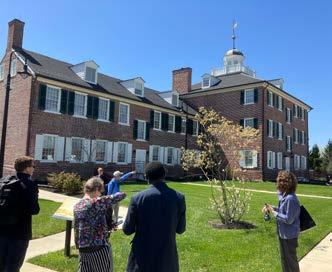

The Penn Humanities, Urbanism, and Design (H+U+D) Initiative, funded by the Andrew Mellon Foundation, bridges the divide between the humanities and design disciplines in the study of cities. For the ninth year, Penn IUR provided administrative and programmatic support for the initiative.
In fall 2021, H+U+D officially welcomed Franca Trubiano (Architecture, Weitzman School of Design) as a new co-director of the initiative, serving during the 2021–22 academic year alongside H+U+D co-chair and Penn IUR Faculty Fellow Andrea Goulet, Professor of French and Francophone Studies, Department of Romance Languages (School of Arts and Sciences). Penn IUR Co-Director Eugénie Birch, co-chair of H+U+D for the initiative’s first eight years, continued working with the initiative as an advisor. Alisa Chiles, PhD Candidate in the History of Art, managed the project.
BACK TO CONTENTS
Photo by Taller Puertorriqueño.
82 PENN IUR
COLLOQUIUM
The H+U+D Colloquium is a defining element of the initiative; this group of 18 scholars from both design and humanities disciplines meets bi-weekly to share research, foster collaboration, and build relationships. Two Dissertation Fellows and two Junior Fellows also joined the colloquium this year, participating in regular colloquium meetings. The Junior Fellows taught undergraduate seminars in the spring semester. (See PAGE 85 for full list.)
In 2021–22, the colloquium returned to meeting in-person, having met virtually in 2020–21 due to the pandemic. Activities over the academic year included research presentations by H+U+D Colloquium members Jorge Téllez, Odette CasamayorCisneros, Jennifer Ponce de León, Herman Beavers, and Randy Mason; H+U+D Junior Fellows Ewa Matcycwk and Alec Stewart; and H+U+D Dissertation Fellows Pavel Andrade and Kimberly Noronha. The colloquium also took two group field trips over the academic year: to Taller Puertorriqueño to see the organization’s new building and meet with Taller’s Exhibition Program Manager and Curator, Rafael Damast, and to the Philadelphia Lazaretto, the first quarantine hospital in the U.S., which served as the gateway to Philadelphia in a crucial period of the nation’s growth.
STUDENT RESEARCH AWARDS
Support of cross-disciplinary education is another signature element of the initiative: H+U+D awards research funding, underwrites fellowships and student colloquia, and sponsors courses. In 2021–22, the Colloquium awarded two Andrew W. Mellon Doctoral Dissertation Fellowships; one Mellon Undergraduate Research Fellowship; and eight graduate student research funding awards. (See PAGE 85 for full list.) Both graduate and undergraduate awardees presented their research at H+U+D faculty colloquiums in the spring on topics ranging from city planning for disability in India, to the trans+ community in Philadelphia’s gayborhood, to climate responsive architecture in Saudi Arabia.
H+U+D-SPONSORED COURSES
Every year, H+U+D sponsors multidisciplinary graduate and undergraduate courses. In fall 2021, H+U+D sponsored a graduate problematics seminar entitled Modern Architectural Theory—Urbanism. In spring 2022, H+U+D sponsored three courses: an anchor institution seminar (The Lazaretto, the City, and the World—Public Health, Immigration, and Urban Growth, 18th–21st C., taught by Penn IUR Faculty Fellow David Barnes, Associate Professor, History and Sociology of Science, School of Arts and Sciences) and two seminars (On the Move—Landscapes of Migration, Mobility, and Racialization, taught by Alec Stewart, Mellon Junior Fellow, and Don’t Forget—Inclusion, Exclusion, and Memory in the Contemporary City, taught by Ewa Matyczyk, Mellon Junior Fellow).
H+U+D is a joint project with the Weitzman School and the School of Arts and Sciences, funded by the Andrew W. Mellon Foundation to foster critical and integrative considerations of the relationship between the humanities and the design professions in the analysis and shaping of the built environment. Following the successful completion of the project’s first five-year period, Mellon renewed the grant for a second five-year period beginning in 2018. Under the renewed grant, the initiative takes “The Inclusive City: Past, Present, and Future” as its theme, focusing on issues of inclusivity and diversity. For more information on the initiative and its programs visit HUMANITIESURBANISMDESIGN.COM
“
Student research awardees presented their research at H+U+D faculty colloquiums in the spring on topics ranging from city planning for disability in India, to the trans+ community in Philadelphia’s gayborhood, to climate responsive architecture in Saudi Arabia. ”
8321/22 ANNUAL REPORT
2021–22 Colloquium Members
Rita Barnard , Professor, English and Comparative Literature, School of Arts and Sciences
David Barnes , Associate Professor, History and Sociology of Science, School of Arts and Sciences
Mia Bay, Roy F. and Jeannette P. Nichols Chair in American History, School of Arts and Sciences,
Herman Beavers , Julie Beren Platt and Marc E. Platt President’s Distinguished Professor, English and Africana Studies, School of Arts and Sciences
Odette Casamayor-Cisneros , Associate Professor, Romance Languages, School of Arts and Sciences
Sonja Dümpelmann , Associate Professor, Landscape Architecture, Stuart Weitzman School of Design
Andrea Goulet , H+U+D Co-Director and Professor, Romance Languages, School of Arts and Sciences
David Hartt , Associate Professor, Fine Arts, Weitzman School of Design
Ken Lum , Marilyn Jordan Taylor Presidential Professor and Chair, Fine Arts, Weitzman School of Design
Randall F. Mason , Associate Professor, Historic Preservation and City and Regional Planning, Weitzman School of Design
Rahul Mukherjee, Dick Wolf Associate Professor of Television and New Media Studies; Associate Professor of English, School of Arts and Sciences
Jennifer Ponce de León , Associate Professor, English, School of Arts and Sciences
Akira Rodriguez , Assistant Professor, City and Regional Planning, Weitzman School of Design
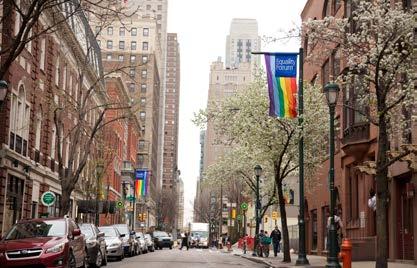
Andrew Saunders , Associate Professor, Architecture, Weitzman School of Design
Nancy Steinhardt , Professor, East Asian Languages and Civilizations, School of Arts and Sciences
Jorge Téllez , Assistant Professor, Romance Languages, School of Arts and Sciences
Franca Trubiano, H+U+D Co-Director and Associate Professor, Architecture, Weitzman School of Design
Mantha Zarmakoupi , Morris Russell and Josephine Chidsey Williams Assistant Professor, History of Art, School of Arts and Sciences
BACK TO CONTENTS
Photo by M. Fischetti for Visit Philadelphia.
84 PENN IUR
Co-Founders and Honorary Fellows of the Mellon H+U+D Initiative
Eugénie Birch , Penn IUR Co-Director and Lawrence C. Nussdorf Professor of Urban Research & Education, City and Regional Planning, Weitzman School of Design
David Brownlee, Frances ShapiroWeitzenhoffer Professor Emeritus of 19th Century European Art, School of Arts and Sciences
Junior Colloquium Members
Alec Stewart , PhD, Architecture, University of California, Berkeley
Ewa Matyczyk , PhD, History of Art and Architecture, Boston University
Andrew W. Mellon Doctoral Dissertation Fellowships

Pavel Andrade, PhD Candidate, Hispanic Studies, School of Arts and Sciences
Kimberly Noronha , PhD Candidate, City and Regional Planning, Weitzman School of Design
Mellon Undergraduate Research Fellow
Lin Ang , Undergraduate, College of Arts and Sciences (Major: Sociology, Minor: Fine Arts)
Graduate Student Research Awardees
Anwar Basunbul , PhD Candidate, Architecture, Weitzman School of Design
Tayeba Batool , PhD Candidate, Anthropology, School of Arts and Sciences
Max Dugan , PhD Candidate, Religious Studies, School of Arts and Sciences
Kim Fernandes , PhD Candidate, Anthropology and Education, School of Arts and Sciences
Parima Kotanut , MS Candidate, Architecture, Weitzman School of Design
Enrique Morales , MFA Candidate, Fine Arts, Weitzman School of Design
Gabriel Raeburn , PhD Candidate, Religious Studies and History, School of Arts and Sciences
John Sigmier, PhD Candidate, Art and Archeology of the Mediterranean World (AAMW), School of Arts and Sciences
Photo by B.alotaby, via Wikipedia.
8521/22 ANNUAL REPORT



86 PENN IUR BACK TO CONTENTS
Penn IUR’s academic and professional networks promote exploration of urban issues across disciplines and sectors while its advisory boards help shape its programs and initiatives.


Penn IUR honors the many experts who collaborate with Penn IUR on research and programming through six honorific categories: Faculty Fellows, Scholars, Emerging Scholars, Fellows, Visiting Scholars, and Affiliated Doctoral Students. Through these networks, Penn IUR aims to foster an environment that encourages cross-disciplinary connections and nurtures a collaborative spirit across the University and beyond.

8721/22 ANNUAL REPORT
PENN IUR FACULTY FELLOWS AND EXECUTIVE COUNCIL
Penn faculty with a demonstrated interest in cities.
Faculty Fellow Executive Council members are denoted with an asterisk.
Francesca Russello Ammon Associate Professor, Department of City and Regional Planning and Department of Historic Preservation, Weitzman School of Design
Daniel Barber
Associate Professor and Chair of Graduate Group, Department of Architecture, Weitzman School of Design
David Barnes
Associate Professor, Department of History and Sociology of Science, School of Arts and Sciences
Jere Behrman
William R. Keenan, Jr., Professor of Economics, Department of Economics, School of Arts and Sciences
Eugénie Birch
Co-Director, Penn IUR; Lawrence C. Nussdorf Professor of Urban Research and Education, Graduate Dean and Chair of Graduate Group, Department of City and Regional Planning, Weitzman School of Design
Matthijs Bouw
Professor of Practice, McHarg Center Fellow for Risk and Resilience, Department of Landscape Architecture, Weitzman School of Design
William Burke-White*
Professor of Law, Carey Law School
Carolyn Cannuscio
Associate Professor, Department of Family Medicine and Community Health, Perelman School of Medicine
Camille Zubrinsky Charles Walter H. and Leonore C. Annenberg Professor in the Social Sciences; Professor of Sociology, Africana Studies, and Education, School of Arts and Sciences
Ram Cnaan
Professor; Program Director, Program for Religion and Social Policy Research; Faculty Director, Goldring Reentry Initiative, School of Social Policy and Practice
Dennis Culhane*
Professor and Dana and Andrew Stone Chair in Social Policy, School of Social Policy and Practice; Co-Principal Investigator, Actionable Intelligence for Social Policy
Tom Daniels
Crossways Professor, Department of City and Regional Planning, Weitzman School of Design
Michael X. Delli Carpini
Oscar H. Gandy Professor of Communication and Democracy; Faculty Director, SNF Paideia Program, Annenberg School for Communication
John DiIulio, Jr.*
Frederic Fox Leadership Professor of Politics, Religion, and Civil Society, Department of Political Science, School of Arts and Sciences
Sonja Dumpelmann
Professor, Department of Landscape Architecture, Weitzman School of Design
Gilles Duranton*
Dean’s Chair in Real Estate Professor, Department of Real Estate, The Wharton School
Fernando Ferreira
C.F. Koo Professor, Professor of Real Estate, Professor of Business Economics and Public Policy, Department of Real Estate, The Wharton School
Billy Fleming
Wilks Family Director, Ian L. McHarg Center, Weitzman School of Design
Vivian Gadsden
William T. Carter Professor of Child Development and Education, Graduate School of Education; Director, National Center on Fathers and Families; Associate Director, National Center on Adult Literacy
Karen Glanz
George A. Weiss University Professor, Perelman School of Medicine and School of Nursing; Director, UPenn Prevention Research Center; Senior Scholar, Center for Clinical Epidemiology and Biostatistics
Andrea Goulet
Professor of Romance Languages, School of Arts and Sciences
David Gouverneur
Associate Professor of Practice, Department of Landscape Architecture, Weitzman School of Design
David Grazian
Professor of Sociology and Communication; Faculty Director, Urban Studies Program, School of Arts and Sciences
BACK TO CONTENTS
88 PENN IUR
Pam Grossman
Dean, Graduate School of Education; George and Diane Weiss Professor of Education, Graduate School of Education
Erick Guerra
Associate Professor; Associate Chair, Department of City and Regional Planning, Weitzman School of Design; Director, Cm2 University Transportation Center
Joseph Gyourko
Martin Bucksbaum Professor, Professor of Real Estate, Finance, and Business Economics and Public Policy, The Wharton School; Nancy A. Nasher and David Haemisegger Director, Zell/Lurie Real Estate Center
Kathleen D. Hall
Associate Professor of Education and Anthropology; Chair, Literacy, Culture, and International Education; Division of Education, Culture, and Society, Graduate School of Education
Jessie Handbury
Assistant Professor of Real Estate, Department of Real Estate, The Wharton School
Ira Harkavy*
Founding Director and Associate Vice President, Barbara and Edward Netter Center for Community Partnerships, School of Arts and Sciences
Amy Hillier
Associate Professor, School of Social Policy and Practice; Associate Professor, Department of City and Regional Planning, Weitzman School of Design
Mark Alan Hughes*
Professor of Practice, Department of City and Regional Planning, Weitzman School of Design; Faculty Director, Kleinman Center for Energy Policy
Roberta Rehner Iversen
Associate Professor, School of Social Policy and Practice
John Jackson, Jr.*
Walter H. Annenberg Dean, Richard Perry University Professor, Annenberg School for Communication
Shane Jensen
Professor, Department Statistics and Data Science, The Wharton School
David Young Kim
Associate Professor, Department of History of Art, School of Arts and Sciences
Vijay Kumar
Nemirovsky Family Dean, Penn Engineering; Professor, Mechanical Engineering and Applied Mechanics, Computer and Information Science, Electrical and Systems Engineering, Penn Engineering
Allison Lassiter
Assistant Professor, Department of City and Regional Planning, Weitzman School of Design
David Leatherbarrow
Professor, Department of Architecture, Weitzman School of Design
Zhongjie Lin
Associate Professor, Department of City and Regional Planning, Weitzman School of Design
Ken Lum
Marilyn Jordan Taylor Presidential Professor and Chair, Department of Fine Arts, Weitzman School of Design
John MacDonald*
Professor of Criminology and Sociology, Department of Criminology, School of Arts and Sciences
Iourii Manovskii
Professor, Economics, School of Arts and Sciences
Christopher Marcinkoski
Associate Professor, Department of Landscape Architecture, Weitzman School of Design
Randall Mason
Associate Professor, Historic Preservation and City and Regional Planning, Weitzman School of Design; Faculty Director, Center for the Preservation of Civil Rights Sites
Matthew McHugh
The Independence Chair for Nursing Education and Professor, School of Nursing; Director, Center for Health Outcomes and Policy Research; Faculty Director, Nursing and Health Care Management Coordinated Dual Degree Program
Howard Neukrug
Professor of Practice, Department of Earth and Environmental Science, School of Arts and Sciences; Executive Director, The Water Center at Penn
Laura Perna
Vice Provost for Faculty; GSE Centennial Presidential Professor of Education, Graduate School of Education; Executive Director, Penn AHEAD
Jennifer Pinto Martin
Viola MacInnes/Independence
Professor of Nursing and Professor of Epidemiology, Perelman School of Medicine; Director, Master of Public Health Program; Executive Director, Center for Public Health Initiatives
Jennifer Ponce de Leon
Associate Professor, Department of English, School of Arts and Sciences
8921/22 ANNUAL REPORT
Wendell Pritchett
James S. Riepe Presidential Professor of Law and Education, Carey Law School
Daniel Raff
Associate Professor, Department of Management, The Wharton School
Vincent Reina
Associate Professor, Department of City and Regional Planning, Weitzman School of Design
Simon Richter
Class of 1942 Endowed Term Professor of German, Interim Department Chair, Department of Germanic Languages and Literatures, School of Arts and Sciences
Akira Drake Rodriguez
Assistant Professor, Department of City and Regional Planning, Weitzman School of Design
Harvey Rubin
Professor of Medicine, Perelman School of Medicine
Megan Ryerson
UPS Chair of Transportation, Associate Dean for Research, Department of City and Regional Planning, Weitzman School of Design
Saswati Sarkar
Professor of Electrical and Systems Engineering, School of Engineering and Applied Science
Lisa Servon
Kevin and Erica Penn Presidential Professor and Chair, Department of City and Regional Planning, Weitzman School of Design
Heather Sharkey
Professor, Department of Near Eastern Languages and Civilizations, School of Arts and Sciences
Todd Sinai
David B. Ford Professor, Professor of Real Estate and Business Economics and Public Policy; Chair, Real Estate Department, The Wharton School
David Skeel
S. Samuel Arsht Professor of Corporate Law, Carey Law School
Eugenia South
Assistant Professor, Department of Emergency Medicine, Perelman School of Medicine; Faculty Director, Urban Health Lab
Brian Spooner
Professor of Anthropology, Department of Anthropology, School of Arts and Sciences
Frederick Steiner*
Dean and Paley Professor, Weitzman School of Design; Co-Executive Director, Ian L. McHarg Center
Nancy Steinhardt
Professor of East Asian Art; Curator of Chinese Art, Penn Museum, Department of East Asian Languages and Civilizations, School of Arts and Sciences
Mark Stern
Professor of Social Policy and History; Principal Investigator, Social Impact of the Arts Project, School of Social Policy and Practice
Marilyn Jordan Taylor
Professor of Architecture and Urban Design, Department of Architecture; Dean Emeritus, Weitzman School of Design
Domenic Vitiello
Associate Professor, Department of City and Regional Planning, Weitzman School of Design
Susan Wachter
Co-Director, Penn IUR; Albert Sussman Professor of Real Estate, Professor of Finance, The Wharton School
Richard Weller
Martin and Margy Meyerson Chair of Urbanism; Professor and Chair of Landscape Architecture, Weitzman School of Design; Co-Executive Director, Ian L. McHarg Center
Richard Wesley
Adjunct Professor, Department of Architecture, Weitzman School of Design
Eliza Davenport Whiteman
Assistant Professor, Family Medicine and Community Health, University of Pennsylvania Perelman School of Medicine
Douglas Wiebe
Professor of Epidemiology, Department of Biostatistics and Epidemiology, Perelman School of Medicine
BACK TO CONTENTS
90 PENN IUR
PENN IUR
SCHOLARS
Renowned academics from around the world investigating critical urban problems.
Arthur Acolin
Assistant Professor, Bob Filley
Endowed Chair, Department of Real Estate, University of Washington
Stefan Al Adjunct Associate Professor, Graduate School of Architecture, Planning and Preservation, Columbia University; Visiting Associate Professor, Graduate Architecture and Urban Design Program, Pratt Institute; Visiting Professor, Tongji University
Elijah Anderson
Sterling Professor of Sociology and of African American Studies, Yale University
Sai Balakrishnan
Assistant Professor of City and Regional Planning, College of Environmental Design, University of California–Berkeley
Timothy Beatley
Teresa Heinz Professor of Sustainable Communities, Department of Urban and Environmental Planning, School of Architecture, University of Virginia
Richard Bernknopf
Director, Science Impact Laboratory for Policy and Economics (SILPE); Research Professor, Department of Economics, University of New Mexico
Alain Bertaud
Senior Fellow, Marron Institute of Urban Management, New York University
Qin Bo
Professor and Chair, Department of Urban Planning and Management, Renmin University of China
Nisha Botchwey
Dean, Hubert H. Humphrey School of Public Affairs, University of Minnesota
Charles Branas
Gelman Endowed Professor and Chair, Department of Epidemiology, Mailman School of Public Health, Columbia University
Catherine Brinkley
Associate Professor, Department of Human Ecology, University of California–Davis
Peter Hendee Brown
Adjunct Professor, Humphrey School of Public Affairs, University of Minnesota; Owner, Conurbation LLC
Robert Buckley
Senior Fellow, International Affairs, Milano School of International Affairs, The New School
Daniel Campo Program Director and Associate Professor, Graduate Program in City and Regional Planning, School of Architecture and Planning, Morgan State University
Anthony Carnevale
Research Professor and Director, Center on Education and the Workforce, Georgetown University
Carolyn Chernoff
Graduate Faculty in Socially Engaged Art, Moore College of Art and Design
Raj Chetty
William A. Ackman Professor of Public Economics, Harvard University
Benjamin Chrisinger
Associate Professor of Evidence-Based Policy Evaluation, Department of Social Policy and Intervention, University of Oxford
Daniel Aldana Cohen
Assistant Professor of Sociology at the University of California–Berkeley; Director of the Socio–Spatial Climate Collaborative
Janet Currie
Henry Putnam Professor of Economics and Public Affairs; Co-Director, Center for Health and Well-Being, Princeton University
Anthony DeFusco
Associate Professor, Department of Finance, Kellogg School of Management, Northwestern University
Stefanie DeLuca
James Coleman Professor of Social Policy and Sociology, Johns Hopkins University
Yongheng Deng Professor and John P. Morgridge
Distinguished Chair in Business, Department of Real Estate and Urban Land Economics, Wisconsin School of Business, University of Wisconsin–Madison
Rebecca Diamond
Class of 1988 Professor of Economics, Graduate School of Business, Stanford University
Zaire Zenit Dinzey-Flores
Associate Professor, Department of Latino and Caribbean Studies, Department of Sociology, Rutgers University
Meagan Ehlenz
Associate Professor, School of Geography and Urban Planning, Arizona State University
9121/22 ANNUAL REPORT
Theodore Eisenman
Associate Professor, Landscape Architecture, University of Massachusetts–Amherst
Richard Florida
University Professor; Professor of Economic Analysis and Policy; Distinguished Scholar-in-Residence, School of Cities, Rotman School of Management, University of Toronto
Matthew Freedman
Professor, Department of Economics, University of California–Irvine
Edward Glaeser
Fred and Eleanor Glimp Professor of Economics, Faculty of Arts and Sciences, Harvard University
Richard Green
Professor, Sol Price School of Public Policy; Director and Chair, Lusk Center for Real Estate; University of Southern California
Shaun Harper
Provost Professor of Management and Organization; Clifford and Betty Allen Chair in Urban Leadership, Marshall School of Business; Executive Director, Race and Equity Center, University of Southern California
Harry Holzer
John LaFarge, Jr. S.J. Professor of Public Policy, McCourt School of Public Policy, Georgetown University
Jordan Hyatt
Associate Professor, Department of Criminology and Justice Studies; Director, Center for Public Policy, Drexel University
Brian Jacob
Walter H. Annenberg Professor of Education Policy; Professor of Public Policy, Economics and Education, Gerald R. Ford School of Public Policy, University of Michigan
Ferdous Jahan
Professor of Public Administration, University of Dhaka
Paul Jargowsky
Professor of Public Policy; Director, Center for Urban Research and Urban Education (CURE), Rutgers University–Camden
Rucker Johnson
Chancellor’s Professor, Goldman School of Public Policy, University of California–Berkeley
Mark Joseph
Leona Bevis/Marguerite Haynam Professor in Community Development; Founding Director, National Initiative on MixedIncome Communities, Jack, Joseph and Morton Mandel School of Applied Social Sciences, Case Western Reserve University
Matthew Kahn
Provost Professor of Economics and Spatial Sciences, University of Southern California
Devesh Kapur
Starr Foundation South Asia Studies Professor, School of Advanced International Studies, Johns Hopkins University
Kirsten Kinzer
Associate Professor, Department of Public and International Affairs, University of North Carolina Wilmington
Christian Krohn-Hansen
Professor, Department of Social Anthropology, University of Oslo
Daniel D. Lee
Tisch University Professor, College of Engineering, Cornell University
Dongquan Li
Associate Professor, Department of Urban Planning and Management, School of Public Administration, Renmin University of China
Huang Ling
Professor of Urban Planning, Chongqing University
Jens Ludwig
Edwin A. and Betty L. Bergman
Distinguished Service Professor, Harris School of Public Policy; Director, Crime Lab, University of Chicago
Gary McDonogh
Helen Herrmann Chair and Professor, Growth and Structure of Cities Department, Bryn Mawr College
James Kwame Mensah Lecturer, Department of Public Administration and Health Services Management, University of Ghana Business School
Dowell Myers
Professor, Sol Price School of Public Policy; Director, Population Dynamics Research Group, University of Southern California
Arthur Nelson
Professor of Urban Planning and Real Estate Development, College of Architecture, Planning and Landscape Architecture, University of Arizona
Suzana Pasternak
Professor of Architecture and Urbanism, University of São Paulo
Andrey Pavlov
Professor of Finance, Beedie School of Business, Simon Fraser University
Rolf Pendall
Professor and Head of Urban and Regional Planning, University of Illinois at Urbana Champaign; Nonresident Fellow, Urban Institute
Marina Peterson
Associate Professor, Department of Anthropology, University of Texas at Austin
BACK TO CONTENTS
92 PENN IUR
Steven Raphael
Professor and James D. Marver Chair in Public Policy, Goldman School of Public Policy, University of California–Berkeley
Stephen Ross
Professor, Department of Economics, University of Connecticut
Jesse Rothstein
Professor of Public Policy and Economics; Faculty Director, California Policy Lab, University of California–Berkeley
Brent Ryan
Associate Professor of Urban Design and Planning; Head, City Design and Development Group; Department of Urban Design and Planning, Massachusetts Institute of Technology
Bish Sanyal
Ford International Professor of Urban Development and Planning, Department of Urban Design and Planning; Director, Special Program in Urban and Regional Studies/Humphrey Fellows Program, Massachusetts Institute of Technology
Saskia Sassen
Robert S. Lynd Professor of Sociology; Co-Chair, Committee on Global Thought; Department of Sociology, Columbia University
Harris Steinberg
Executive Director, Lindy Institute for Urban Innovation, Drexel University
Matthew Steinberg
Associate Professor of Education Policy, College of Education and Human Development, George Mason University
Vinod Tewari
Professor, Department of Policy Studies, TERI University, New Delhi
Catherine Tumber
Senior Research Associate, Dukakis Center for Urban and Regional Policy, Northeastern University
Lawrence Vale
Ford Professor of Urban Design and Planning; Associate Dean, Department of Urban Studies and Planning, Massachusetts Institute of Technology
Mark Willis
Senior Policy Fellow, NYU Furman Center, New York University
Kathleen Wolf
Research Social Scientist, College of the Environment, School of Environmental and Forest Sciences, University of Washington
Laura Wolf-Powers
Associate Professor, Department of Urban Policy and Planning, Hunter College, City University of New York
Chunxia Yang
Associate Professor, Department of Architecture, Tongji University
Anthony Yeh
Chan To Haan Professor in Urban Planning and Design and Chair Professor of the Department of Urban Planning and Design; Director of the Geographic Information Systems (GIS) Research Centre, University of Hong Kong
PENN IUR EMERGING SCHOLARS
Early-career researchers
at various institutions conducting urbanfocused scholarship.
Cameron Anglum
Assistant Professor, School of Education, Education Policy and Equity, Saint Louis University
Peter Blair
Assistant Professor of Education, School of Education, Harvard University
Elizabeth Bynum Project Researcher, Beeck Center for Social Impact and Innovation, Georgetown University
Caroline Cheong
Assistant Professor, History, University of Central Florida
Lee Ann Custer
Visiting Assistant Professor of Art History, University of Arizona–Tucson
Xiaoxia Dong
Research Associate and Lecturer, City and Regional Planning, University of Pennsylvania
Meagan Ehlenz
Assistant Professor, School of Geography and Urban Planning, Arizona State University
Albert Han
Assistant Professor, Urban Planning, Korea Advanced Institute of Science and Technology
9321/22 ANNUAL REPORT
Jacob Krimmel
Economist, Federal Reserve Board in the Division of Research & Statistics
Jae Min Lee
Assistant Professor, School of Architecture, University of Ulsa, Korea
Shengxio (Alex) Li
Postdoctoral Researcher, School of Public Policy at University of California–Riverside
Sisi Liang
Assistant Professor, School of Architecture, Tsinghua University, China
Theodore Lim
Assistant Professor, Urban Affairs and Planning, Virginia Tech
Desen Lin
Assistant Professor of Finance, California State University, Fullerton
Amy Lynch
Assistant Professor, Department of Geography, Ohio University
Megan Reed
Assistant Professor, Sociology and Quantitative Theory and Methods (QTM), Emory University
Ariadna Reyes-Sanchez
Assistant Professor, Public Affairs and Planning, The University of Texas at Arlington
Mary Rocco
Term Assistant Professor, Urban Studies, Barnard College–Columbia University
Jennifer Whittaker
Research Associate, PolicyLab, Children’s Hospital of Philadelphia
Amber Woodburn
Assistant Professor, City and Regional Planning, Knowlton School of Architecture, The Ohio State University
Vivian Wu
Assistant Professor, School of Public Policy, UMass Amherst
Albert Zevlev
Assistant Professor, Applied Economics, Zicklin School of Business, Baruch College, City University of New York
PENN IUR FELLOWS
Expert practitioners and policymakers shaping the world’s cities.
Stuart Andreason
Assistant Vice President and Director, Center for Workforce and Economic Opportunity, Federal Reserve Bank of Atlanta
Timothy Bartik
Senior Economist, W.E. Upjohn Institute for Employment Research
María Alicia Becdach
Practitioner Architect and Urban Planning Consultant, Quito, Ecuador
Angela Glover Blackwell Founder in Residence, PolicyLink
Raphael Bostic
President and CEO, Federal Reserve Bank of Atlanta Anne Bovaird Nevins
President, PIDC
Monica Brezzi Head, Governance Indicators and Performance Evaluation Division, Directorate for Public Governance, OECD
Paul Brophy
Principal, Brophy and Reilly, LLC
Seung Ah Byun
Water Resource Engineer, Delaware River Basin Commission
Shahana Chattaraj Director, Research Data and Innovation, WRI India, World Resources Institute
BACK TO CONTENTS
94 PENN IUR
Mengke Chen
Director, Tencent
Henry Cisneros
Chairman & Co-Founder, American Triple I Partners
James Cloar
Chief Executive Office & President, Aspen Medical Products
Joan Clos
Former Executive Director and SecretaryGeneral of Habitat III, United Nations Human Settlement Programme (UNHabitat); former Mayor of Barcelona, Spain
Steve Cochrane
Chief APAC Economist, Moody’s Analytics
Jamaica Corker Program Officer, Data and Evaluation, Family Planning Program, Bill and Melinda Gates Foundation
Andrew Davidson
Founder & President, Andrew Davidson and Co., Inc.
Chandan Deuskar
Urban Development Consultant, The World Bank
Derek Douglas
Vice President for Civic Engagement and External Affairs, University of Chicago
Brian English
Founder & Owner, Origin Studio
John Paul Farmer
Chief Innovation Officer & President of WeLink Cities, WeLink
Richard Freeland
Senior Consultant, Freeland/Maguire Strategic Leadership Services
David Gest Partner, Ballard Spahr
William Glasgall
Senior Vice President & Director, State and Local Initiatives, Volcker Alliance
Ira Goldstein
President, Policy Solutions, Reinvestment Fund
Laurie Goodman
Institute Fellow, Housing Finance Policy Center, the Urban Institute
Alan Greenberger
Vice President of Real Estate and Facilities, Drexel University
Daniel Hartley
Senior Economist, Federal Reserve Bank of Chicago
Andrew Haughwout
Director of Household and Public Policy Research, Federal Reserve Bank of New York
Abha Joshi-Ghani Senior Adviser for Public Private Partnerships, Infrastructure Analytics, and Guarantees, The World Bank
Aisa Kirabo Kacyira
Deputy Executive Director, UN-Habitat and UN Assistant Secretary-General
Matthew Kenyatta
Director of Justice and Belonging, Weitzman School of Design, University of Pennsylvania
Kyung-Hwan Kim
Former President, Korea Research Institute for Human Settlements; former Vice Minister, Ministry of Land, Infrastructure and Transport (MOLIT), Republic of Korea
Elizabeth Kneebone
Research Director, Terner Center for Housing Innovation, University of California–Berkeley
Yolanda Kodrzycki
Vice Chair, Breakthrough Greater Boston; Former Vice President and Director of the New England Public Policy Center, Federal Reserve Bank of Boston
Carolyn Kousky
Executive Director, Wharton Risk Management and Decision Processes Center, University of Pennsylvania
Michael LaCour-Little Director of Economics, Economic and Strategic Research, Fannie Mae
Paul Levy President & CEO, Center City District
James Kwame Mensah Lecturer, Department of Public Administration and Health Services Management, University of Ghana Business School
Rose Molokoane
Deputy President, Shack/Slum Dwellers International; National Coordinator, South Africa Alliance and the Federation of the Urban Poor
Simon Mosbah
Business Line Director, Infrastructure Funding and Grants, WSP USA
Michael Nutter
Former Mayor, City of Philadelphia; David N. Dinkins Professor of Professional Practice in Urban and Public Affairs, School of International and Public Affairs, Columbia University
9521/22 ANNUAL REPORT
Sheela Patel
Founder & Director, Society for Promotion of Area Resource Centers (SPARC)
Enrique Peñalosa
Former Mayor, Bogotá, Colombia; President and Board of Directors, Institute for Transportation and Development Policy (ITDP)
Janice Perlman
Senior Research Scholar, Columbia University
Martino Pesaresi
Senior Scientific Officer, Global Security and Crisis Management Unit, Joint Research Centre Institute for the Protection and Security of the Citizen (IPSC)
Richard Ravitch
Director, Volcker Alliance; Former Lieutenant Governor, New York State
Michael Replogle
Founder, Institute for Transportation & Development Policy; Former Deputy Commissioner for Policy, New York City Department of Transportation
Aromar Revi
Director, India Institute for Human Settlements (IHHS)
Claire Robertson-Craft
Founder & Director, ImpactED, University of Pennsylvania
Inga Saffron
Architecture Critic,
The Philadelphia Inquirer
Tony Sorrentino
Assistant Vice President,
Office of the Executive Vice President, University of Pennsylvania
David Stanek
Director, Econsult Solutions
Joseph Su
Chief, Department of National Spatial Planning and Development, Taiwan National Development Council
David Thornburgh
President & CEO, Committee of Seventy
Joseph Tracy
Executive Vice President & Senior Advisor to the President, Federal Reserve Bank of Dallas
Margery Austin Turner Institute Fellow, Urban Institute
Richard Voith
Founding Principal, Econsult Solutions
Sameh Wahba
Global Director, Urban, Disaster Risk Management, Resilience, and Land Global Practice, The World Bank
Sarah Rosen Wartell
President, Urban Institute
Sidney Wong
Senior Advisor, ESI Community Data Analytics
Lily Yeh
Global Artist & Founder, Barefoot Artists
Mark Zandi
Chief Economist, Moody’s Analytics
PENN IUR VISITING SCHOLARS
Mauricio Rodas
Visiting Scholar at Perry World House, Penn Institute for Urban Research, and Kleinman Center for Energy Policy; Former Mayor, Quito, Ecuador
Wenlong Xie
Visiting Scholar; Doctoral Candidate, School of Architecture, Harbin Institute of Technology
Yunmyong Yi
Visiting Scholar; Researcher, Environment Planning Institution, Seoul National University
BACK TO CONTENTS
96 PENN IUR
PENN IUR AFFILIATED DOCTORAL STUDENTS AND POSTDOCTORAL FELLOWS
Doctoral candidates and postdoctoral fellows from across Penn’s campus investigating urban issues.
Jane Abell
Anthropology, School of Arts and Sciences
Jay Arzu
City & Regional Planning, Weitzman School of Design
Irteza Binte-Farid Postdoctoral Researcher at the Annenberg School of Communication
Bing-Yu Chiu City & Regional Planning, Weitzman School of Design
Joshua Davidson
City & Regional Planning, Weitzman School of Design
Stephanie Fenniri
City & Regional Planning, Weitzman School of Design
Chaeri Kim
City & Regional Planning, Weitzman School of Design
Austin Lee
Sociology, School of Arts and Sciences
Yeonhwa Lee
City & Regional Planning, Weitzman School of Design
Robert Levinthal
City & Regional Planning, Weitzman School of Design
Muira McCammon
Annenberg School of Communications Diana Negron City & Regional Planning, Weitzman School of Design
Kimberly Noronha
City & Regional Planning, Weitzman School of Design
Chris Quattro
City & Regional Planning, Weitzman School of Design
Charles Starks
City & Regional Planning, Weitzman School of Design
Boqian Xu
City & Regional Planning, Weitzman School of Design
Patricio Zambrano-Barragán
City & Regional Planning, Weitzman School of Design
Tali Ziv
Anthropology, School of Arts and Sciences
PENN IUR CONSULTATIVE BOARDS
Penn IUR is advised by internationally renowned urban experts.
The Penn IUR Advisory Board is comprised of innovative practitioners in such fields as real estate, governance, arts and culture, urban planning, finance, communications, and philanthropy. The Penn IUR Executive Committee is composed of deans, faculty, and University administrators from across Penn’s 12 schools.
PENN IUR ADVISORY BOARD
Mark Rosenberg
Principal, MHR Fund Management, LLC
P. David Bramble
Managing Partner, MCB Real Estate, LLC
Patrick Brett
Managing Director, Municipal Debt Capital Markets and Capital Solutions, Citigroup
Kevin Chavers
Chairman, Bedford Stuyvesant Restoration Corporation
Alex Chilton
Managing Director, Head of Municipal Structuring, Financing and Lending, at Morgan Stanley Municipal Bond Division
Manuel Diaz, Esq.
Senior Partner, Lydecker Diaz, LLC; Former Mayor of Miami, FL
Damien Dwin
CEO, Lafayette Square Holding Company, LLC
9721/22 ANNUAL REPORT
Paul Farmer
Former Executive Director & CEO, American Planning Association
David Gallo
Founder and Managing Partner, Valinor Management, L.P.
Renee Glover
Founder, Managing Member & CEO, The Catalyst Group, LLC
Jacques Gordon
Global Head of Research and Strategy, La Salle Management
Doug Hagan President, Krytar
Virginia Hepner
Former CEO, Woodruff Arts Center
J. Robert Hillier
Managing Principal, Studio Hillier, LLC
Rachel Kramer Vice President and Partner, The Richdale Group
William Lukashok Director, Prana Investments
Tom Millon
CEO, Computershare Loan Services
Jessica Morgan
Principal, Lubert-Adler Real Estate Funds
Marc H. Morial
President & CEO, National Urban League
Fahd Mukhtar Director, Fatima Group
Melanie Nussdorf Partner, Steptoe & Johnson
Lawrence Parks Co-Founder, Forethought Advisors
Egbert Perry
Chairman & CEO, The Integral Group, LLC
Jeffrey Poss
Partner, Willkie Farr & Gallagher, LLP
Deborah Ratner Salzberg Partner, RMS Investment Group
Richard Richman Chairman, The Richman Group, Inc.
Jonathan F.P. Rose President, Jonathan Rose Companies
Diane Rosen Counsel, Herrick, Feinstein, LLP
Robert Rosenfeld President, Rosenfeld Realty Company, Inc.
Molly Rouse-Terlevich Community Volunteer and Political Fundraiser
Everett Sands CEO, Lendistry
Alan Schnitzer
CEO, The Travelers Companies, Inc.
David Shapiro
Partner, Corporate Department, Wachtell, Lipton, Rosen & Katz
Robert Stewart
Managing Partner, Urban Impact Partners
Michael Tabb
Director, Real Estate Strategy and Transactions, Google
Kenneth Tanenbaum
Vice Chairman, Kilmer Van Nostrand Co. Limited
Sameh Naguib Wahba World Bank’s Regional Director, Sustainable Development in the Europe and Central Asia (ECA) Region
PENN IUR EXECUTIVE COMMITTEE
Wendell Pritchett
James S. Riepe Presidential Professor of Law and Education, Carey Law School (Co-Chair)
Dawn Bonnell
Vice Provost for Research, Henry Robinson Towne Professor of Engineering and Applied Science, School of Engineering and Applied Science (Co-Chair)
William Burke-White Professor of Law, Carey Law School
Jeffrey Cooper Vice President, Office of Government and Community Affairs
Dennis Culhane
Professor and Dana and Andrew Stone Chair in Social Policy, School of Social Policy and Practice; Co-Principal Investigator, Actionable Intelligence for Social Policy
John DiIulio, Jr.
Frederic Fox Leadership Professor of Politics, Religion, and Civil Society, Department of Political Science, School of Arts and Sciences
Gilles Duranton
Dean’s Chair in Real Estate Professor, Department of Real Estate, The Wharton School
Steven Fluharty
Dean and Thomas S. Gates, Jr. Professor of Psychology, Pharmacology, and Neuroscience, School of Arts and Sciences
BACK TO CONTENTS
98 PENN IUR
Michael Gibbons
I.W. Burnham II Professor of Investment Banking, The Wharton School
Pam Grossman
Dean, Graduate School of Education; George and Diane Weiss Professor of Education, Graduate School of Education
Mark Alan Hughes
Professor of Practice, Department of City and Regional Planning, Weitzman School of Design; Faculty Director, Kleinman Center for Energy Policy
John Jackson, Jr. Walter H. Annenberg Dean, Annenberg School for Communication; Richard Perry University Professor
John MacDonald
Professor of Criminology and Sociology, Department of Criminology, School of Arts and Sciences
Frederick Steiner
Dean and Paley Professor, Weitzman School of Design; Co-Executive Director, Ian L. McHarg Center
9921/22 ANNUAL REPORT
PENN IUR DONORS AND FUNDERS
In addition to support from the University, Penn IUR is funded through a variety of external sources including grants, research contracts and partnerships, and donations. Penn IUR is grateful to all of those listed below who have provided funding support over the year.
Mr. P. David Bramble
Mr. Patrick J. Brett
Connecticut’s Innovation Ecosystem (CTNext)
Crossways Foundation
Mr. W. Paul Farmer and Ms. Cornelia G. Farmer
The Federal Home Loan Mortgage Corporation
Mr. David L. Gallo
Mrs. Jessica M. Morgan and Mr. Jason A. Morgan
Dr. Jacques N. Gordon and Ms. Elizabeth H. Wiltshire
Mr. Douglas John Hagan and Mrs. Alison Keiller Hagan
Mr. Evan Heller and Mrs. Lesley Katcher Heller
Mr. Thomas J. Healey
Ms. Virginia A. Hepner
Mr. J. Robert Hillier and Ms. Barbara Hillier
Mr. Michael J. Glosserman
Ms. Renee Lewis Glover
Guangzhou Institute for Urban Innovation
Mr. William Lukashok
The Andrew W. Mellon Foundation
Mr. Tom Robert Millon
Melanie Franco Nussdorf, Esq.
Mr. Benjamin A. Nussdorf and Mrs. Inna Nussdorf
Mr. Jed F. Nussdorf and Mrs. Sarah Nussdorf
Mr. Richard P. Richman and Mrs. Ellen Schapps Richman
Mr. Egbert L. J. Perry and Mrs. A. Renee Perry
Mr. Jeffrey R. Poss and Ms. Judith Poss
Mr. Mark Rosenberg and Ms. Rochelle Rosenberg
Mr. Robert Rosenfeld and Ms. Sheri Rosenfeld
Mr. Jonathan F.P. Rose
Ms. Molly Rouse-Terlevich and Mr. Fabio Terlevich
Mr. Everett K. Sands
Dr. Deborah Ratner Salzberg and Mr. Michael Salzberg
David Eric Shapiro, Esq.
Mr. Alan David Schnitzer and Ms. Anne Berman Schnitzer
Mr. Robert Stewart and Ms. Kathryn Stewart
Mr. Kenneth Michael Tanenbaum
Mr. Steven Weiner
The Woodrow Wilson International Center for Scholars
BACK TO CONTENTS
100 PENN IUR
PENN IUR STAFF AND CONTACT
MANAGING DIRECTOR
Amy Montgomery
AMYLMO@UPENN.EDU
CO-DIRECTORS
Eugénie Birch
Lawrence C. Nussdorf Professor of Urban Research and Education
Department of City and Regional Planning
Stuart Weitzman School of Design, University of Pennsylvania
215-898-8330
ELBIRCH@UPENN.EDU
Susan Wachter
Albert Sussman Professor Professor of Real Estate and Finance
The Wharton School, University of Pennsylvania 215-898-6355
WACHTER@WHARTON.UPENN.EDU
PROGRAM COORDINATOR
Arden Jordan
ARDENJ@DESIGN.UPENN.EDU
PUBLICATIONS AND COMMUNICATIONS DIRECTOR
Diana Lind
DLIND@UPENN.EDU
PROGRAM DIRECTOR, GLOBAL RESEARCH INITIATIVES
Amanda Lloyd
AMANDA3@UPENN.EDU
POSTDOCTORAL FELLOW
Samuel Geldin
SGELDIN@UPENN.EDU
CONTACT
Meyerson Hall, G-12
210 South 34th Street Philadelphia, PA 19104-6311 215-573-8386
PENNIUR@POBOX.UPENN.EDU
PENNIUR.UPENN.EDU
TWITTER.COM/PENNIUR
FACEBOOK.COM/PENNIUR.UPENN
INSTAGRAM.COM/PENNIUR
LINKEDIN.COM/COMPANY/PENNIUR
INFORMATION
10121/22 ANNUAL REPORT



The Penn Institute for Urban Research (Penn IUR) is dedicated to advancing cross-disciplinary urban-focused research, instruction, and civic engagement on issues relevant to cities around the world. As the global population becomes increasingly urban, understanding cities is vital to informed decision-making and public policy at the local, national, and international levels.

ALIGNING ADAPTING ACCELERATING


RESEARCH AND PRACTICE
TO NEW CHALLENGES
CHANGE THROUGH MAKING KNOWLEDGE ACCESSIBLE
instagram.com/penniur


PENN INSTITUTE FOR URBAN RESEARCH 21/22 ANNUAL REPORT Meyerson Hall, G-12 210 South 34th Street Philadelphia, PA 19104 215 573 8386 penniur@pobox.upenn.edu penniur.upenn.edu twitter.com/penniur facebook.com/penniur.upenn













































































 By Mauricio Rodas
By Mauricio Rodas


















































